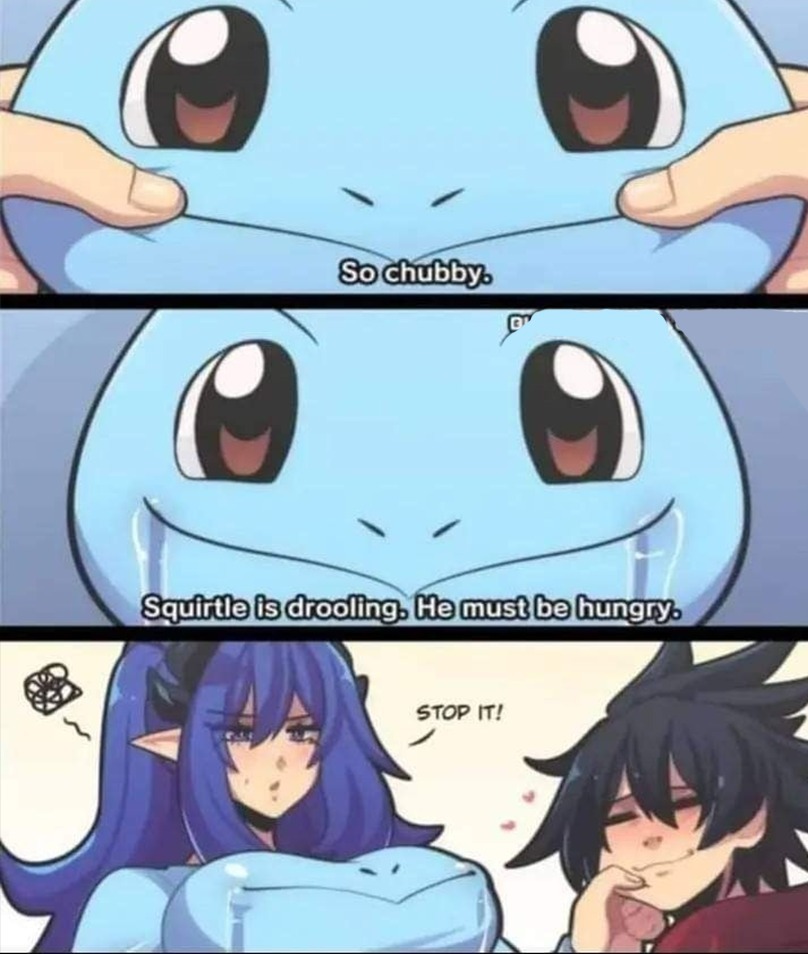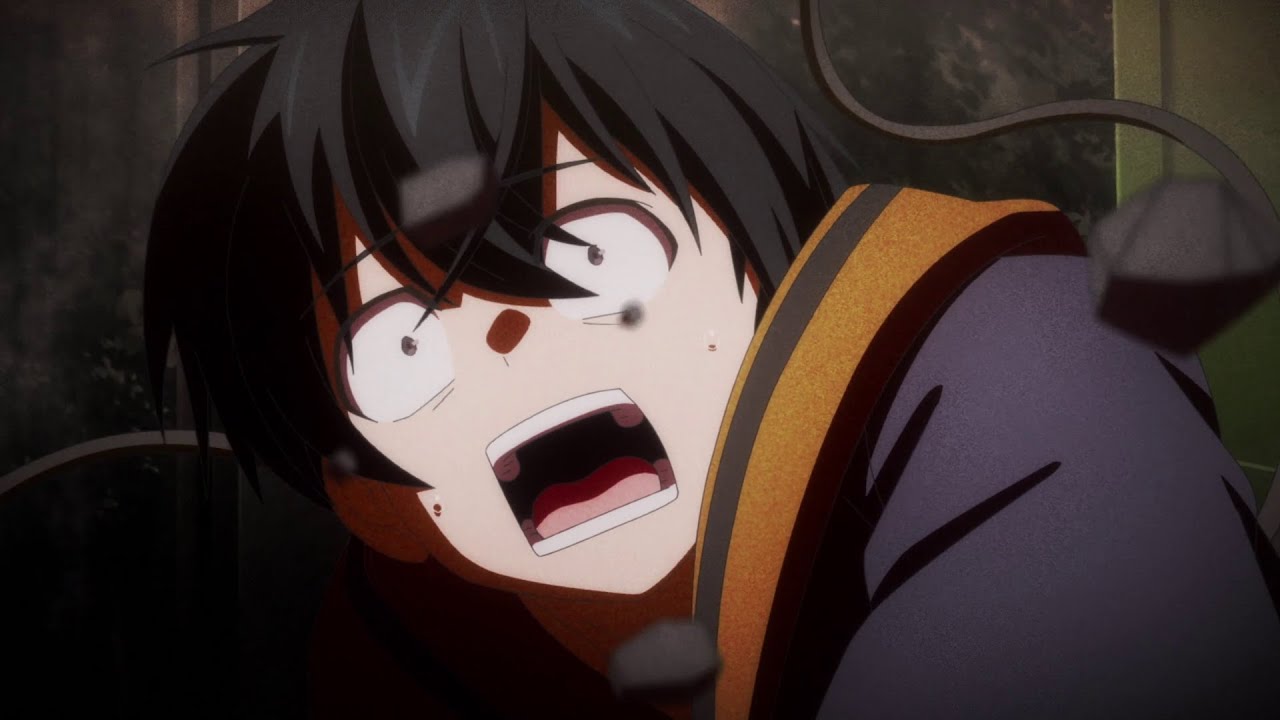Anime series like Dark Gathering draw fans into their eerie narratives, blending horror and supernatural elements with profound explorations of character development. Dark Gathering, with its distinctive mix of chilling suspense and psychological depth, has captured the attention of viewers who find themselves empathetic to Keitaro’s reluctant acceptance of his spirit-attracting powers and his journey through ghostly mysteries.
For those who appreciate the somber moods or the intense emotional arcs prevalent in the show, there are several other anime in the supernatural and paranormal genres that are sure to grab attention.
These series often incorporate horror elements derived from traditional Japanese folklore and occasionally from other global cultures. They might present these elements through fictionalized versions of well-known tales or use them to forge entirely new, intriguing worlds.
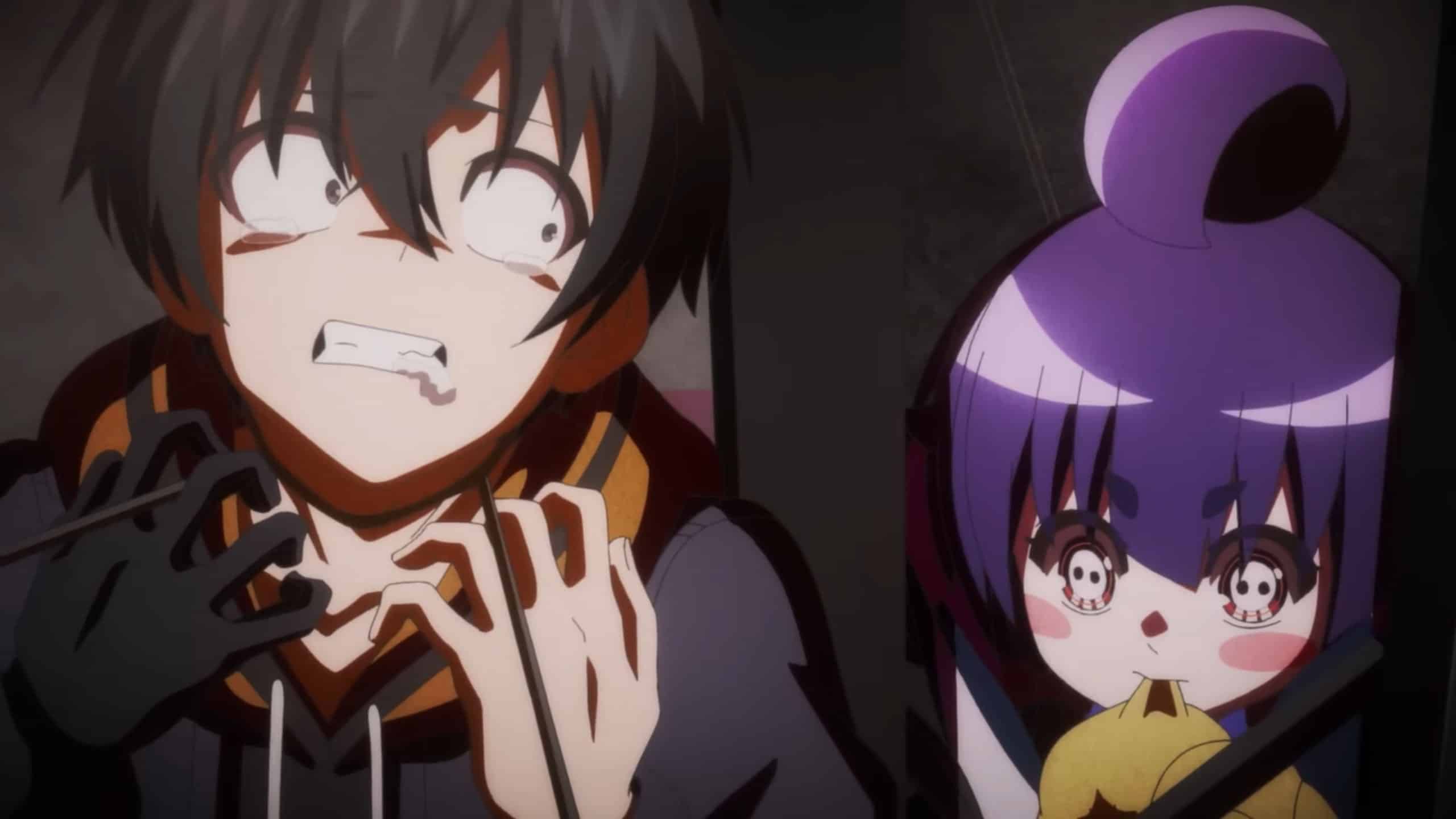
Dark Gathering centers on the characters Keitaro and Eiko, who were haunted by a spirit during their childhood. As an adult, Keitaro, who has become a recluse due to the trauma, begins to recover with Eiko’s support. Together, they must guide Yayoi and Ai, Keitaro’s students, as they confront wrathful spirits and a malevolent deity.
The following list of anime, similar to Dark Gathering, features comparable themes and supernatural aspects, ensuring a spine-chilling viewing experience for fans of the genre.
It sounds like “Dark Gathering” offers a blend of horror, supernatural intrigue, and compelling character growth, making it a standout anime in the genre. For fans who are drawn to Keitaro’s struggles and the ghostly cases he encounters, there are plenty of other acclaimed series that share a similar strength blend of horror.
If you’re intrigued by the melancholic atmospheres and emotional character journeys found in “Dark Gathering,” you’ll likely find these supernatural and paranormal anime recommendations equally :
1. Tokyo Ghoul
“Tokyo Ghoul” offers a gripping and haunting tale of identity, transformation, and the struggle between humanity and monstrosity, making it a compelling recommendation for fans of “Dark Gathering.” Following college student Ken Kaneki’s harrowing journey after a fateful encounter with a ghoul, the series looks into themes of existentialism, death, and grief with striking imagery and profound storytelling.
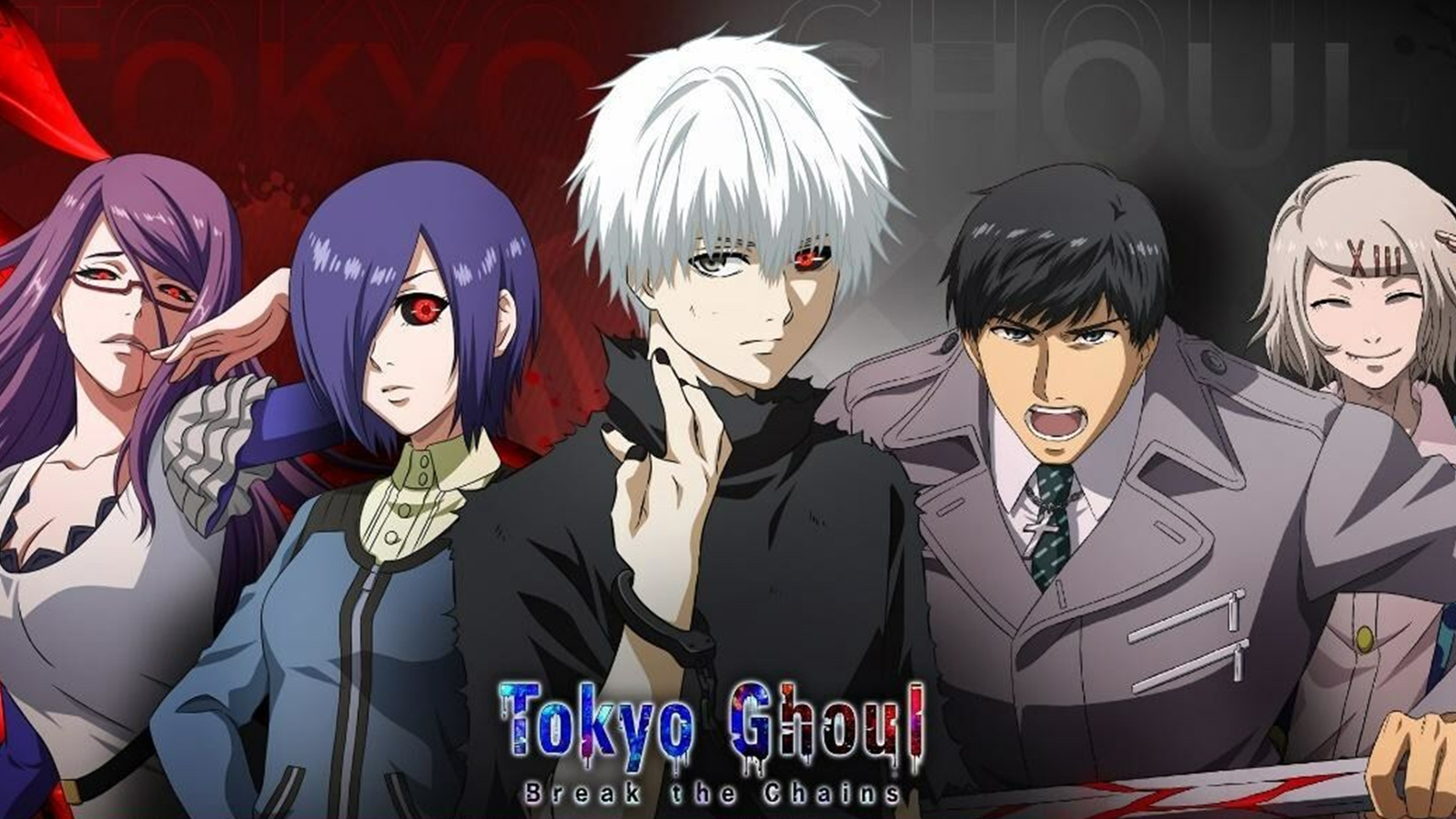
As Kaneki grapples with his newfound half-ghoul identity and the moral complexities of his existence, viewers are drawn into a world where the line between humanity and monstrosity blurs. Studio Pierrot’s adaptation of Sui Ishida’s original manga vividly brings Kaneki’s inner turmoil and external battles to life, immersing audiences in a visceral and emotionally charged narrative.
Throughout “Tokyo Ghoul,” Kaneki confronts profound existential questions and undergoes profound inner transformations, mirroring the struggles faced by characters in “Dark Gathering.” The series follows the loss of humanity and the search for identity in the face of overwhelming adversity, resonating with audiences on a deeply emotional level.
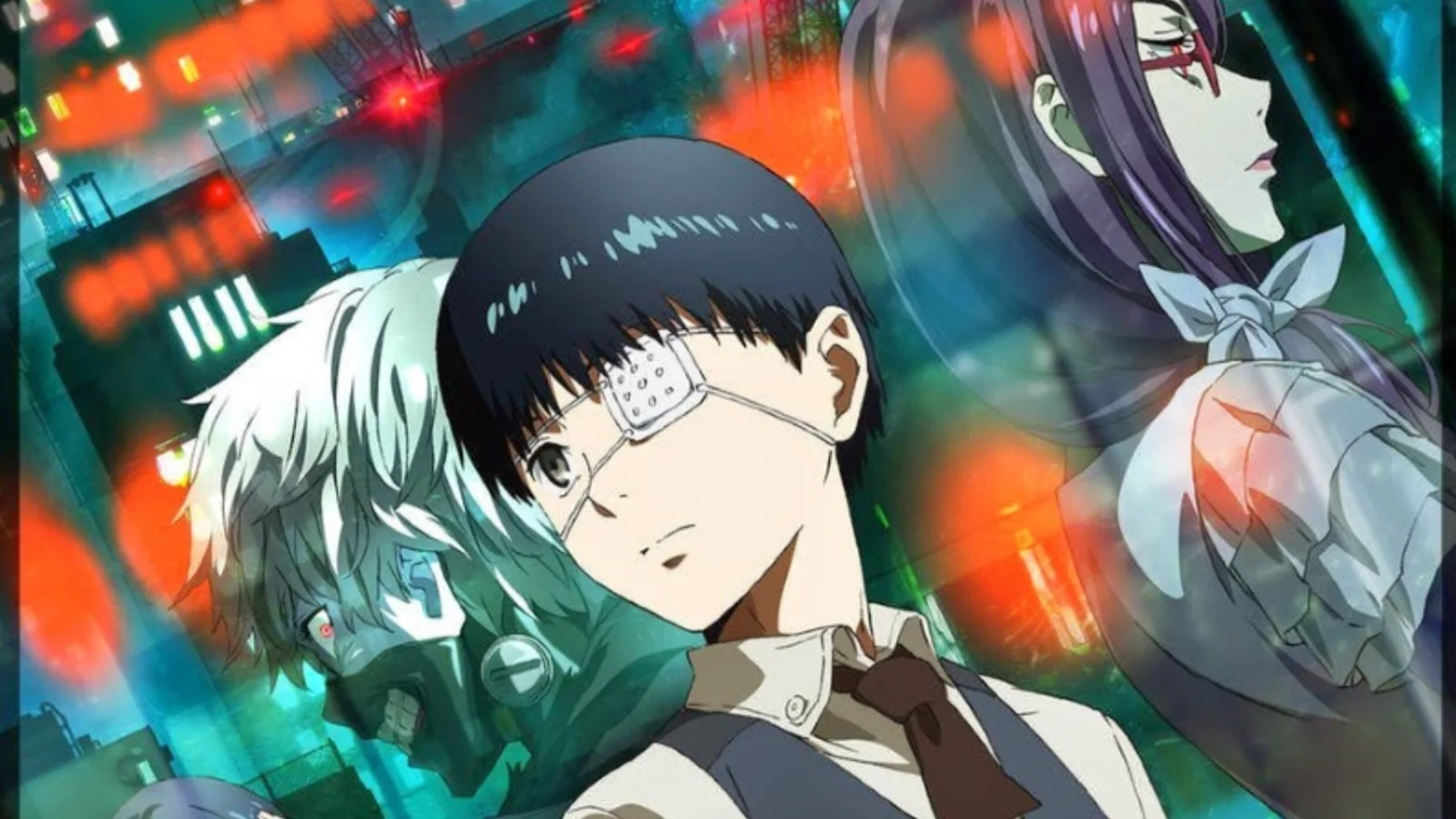
Tokyo Ghoul is a dark fantasy anime that goes into the gruesome and morally complex world of ghouls and humans. The series follows Ken Kaneki, a college student who undergoes a transformation into a half-ghoul after a deadly encounter with one. Thrust into the harsh, dual existence where he must consume human flesh to survive, Kaneki finds himself caught between the worlds of humans and ghouls.
The narrative follows themes of identity, belonging, and the gray areas of morality as Kaneki struggles to maintain his humanity while being forced to adapt to ghoul society. The show is known for its intense action sequences, psychological depth, and the existential dilemmas faced by its characters.
Tokyo Ghoul examines the impact of transformation and the struggle for acceptance in a world filled with prejudice and fear, making it a compelling watch for those interested in the darker, more introspective side of anime.
2. Blue Exorcist
Blue Exorcist offers a blend of supernatural action, personal drama, and intricate world-building that makes it a fantastic recommendation for fans of “Dark Gathering.” Centered around Rin Okumura, the literal son of Satan, the series follows his journey as he enrolls at True Cross Academy to train as an exorcist and battle demonic threats.
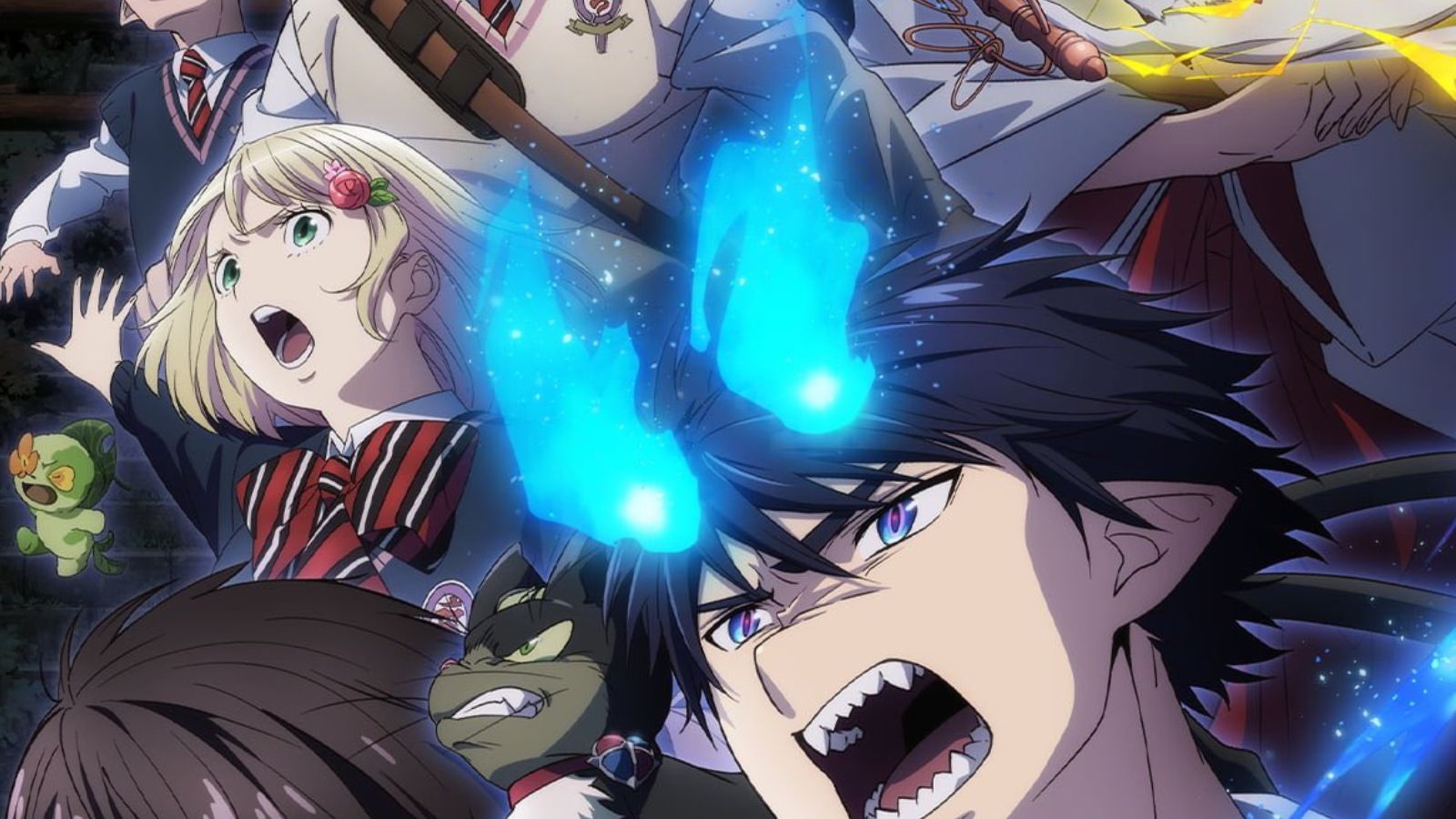
Much like the characters in “Dark Gathering,” Rin must confront his own identity and grapple with the challenges of balancing his human and demonic heritage. As he rivalries and drama among his fellow students, Rin’s journey becomes a compelling guide of self-discovery and acceptance.
Studio A-1 Pictures brings Rin’s fiery powers to life through fluid animation, immersing viewers in exhilarating battles against supernatural foes. The incorporation of religious lore adds depth and complexity to the series, providing fans with plenty of intriguing elements to analyze.
Blue Exorcist, also known as *Ao no Exorcist* in Japanese, is a popular manga and anime series created by Kazue Katō. The series began serialization in *Jump Square* magazine by Shueisha in April 2009, and it has since been collected into several tankōbon volumes.
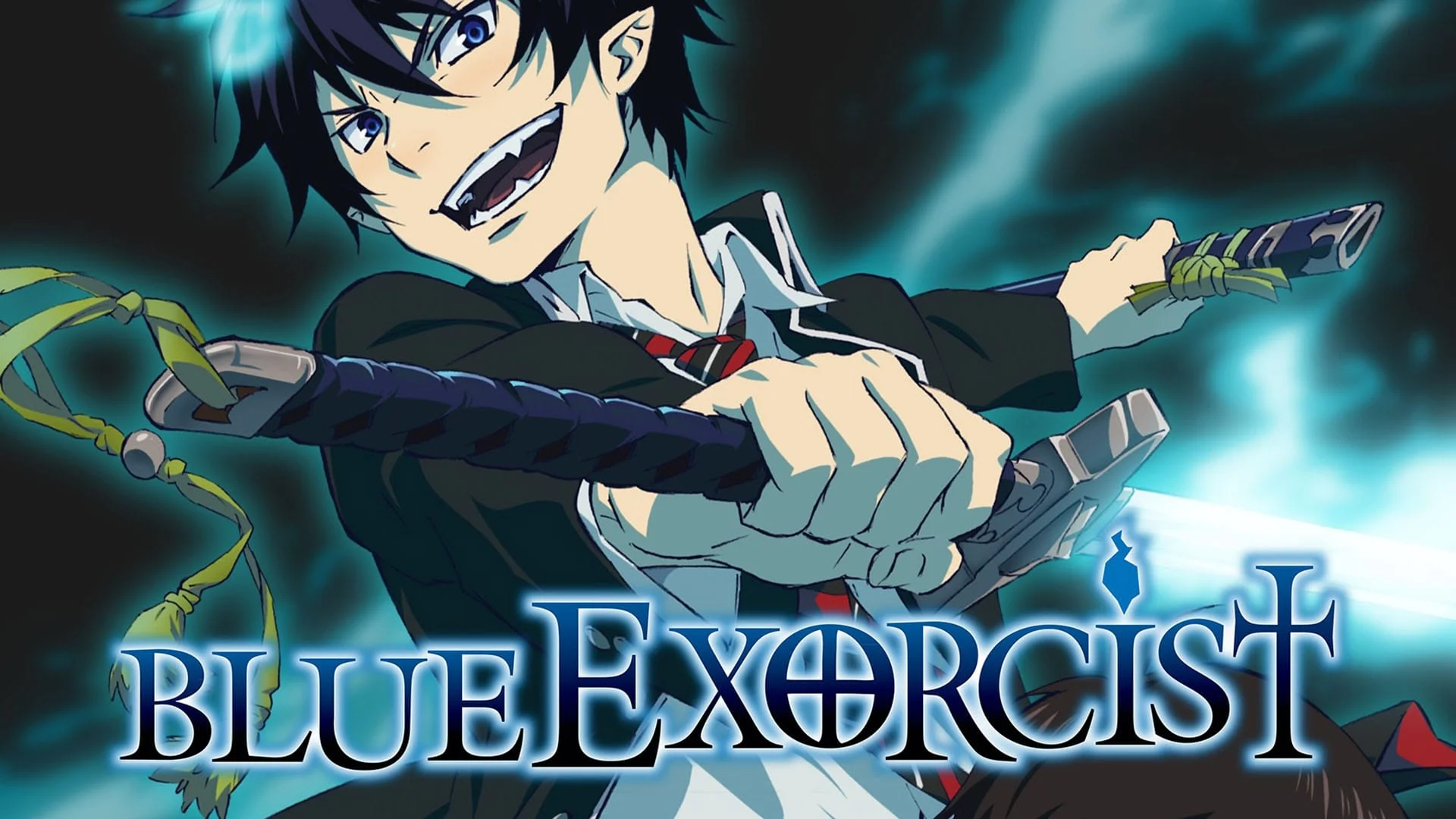
The story revolves around Rin Okumura, a teenager who discovers he is the son of Satan, born from a human woman, and is the inheritor of Satan’s powers. This revelation turns his world upside down, and he finds himself at odds with the demonic nature within him. Determined to fight his fate and to protect his loved ones, Rin decides to become an exorcist, a decision that leads him to enroll at the True Cross Academy, an exorcist training school.
Rin’s twin brother, Yukio Okumura, who has been aware of his heritage for longer, is already an accomplished exorcist and has become one of Rin’s instructors. Throughout the series, Rin struggles to control his demonic powers, aiming to use them for good and to fight against demons and other evil entities.
The narrative follows the themes of identity, acceptance, and the battle between good and evil, with Rin’s development as an exorcist paralleling his personal growth and his quest to understand who he really is.
In addition to the manga, the *Blue Exorcist* series has been adapted into an anime television series, produced by A-1 Pictures. The first season aired in 2011, and a second season, titled *Blue Exorcist: Kyoto Saga*, followed in 2017. These adaptations cover various arcs from the manga and introduce anime-original content as well.
Blue Exorcist has also expanded into various other media, including spin-off manga, novels, video games, and a stage play, making it a significant franchise in the anime and manga community. Fans are drawn to its exciting action sequences, complex characters, and the dynamic world that Kazue Katō has created.
3. Ghost Hound
“Ghost Hound” offers trauma, mystery, and the blurred boundaries between reality and dreams, making it a compelling recommendation for fans of “Dark Gathering.” The series follows three boys who, after experiencing trauma, develop spiritual abilities stemming from their post-incident anxiety neurosis.
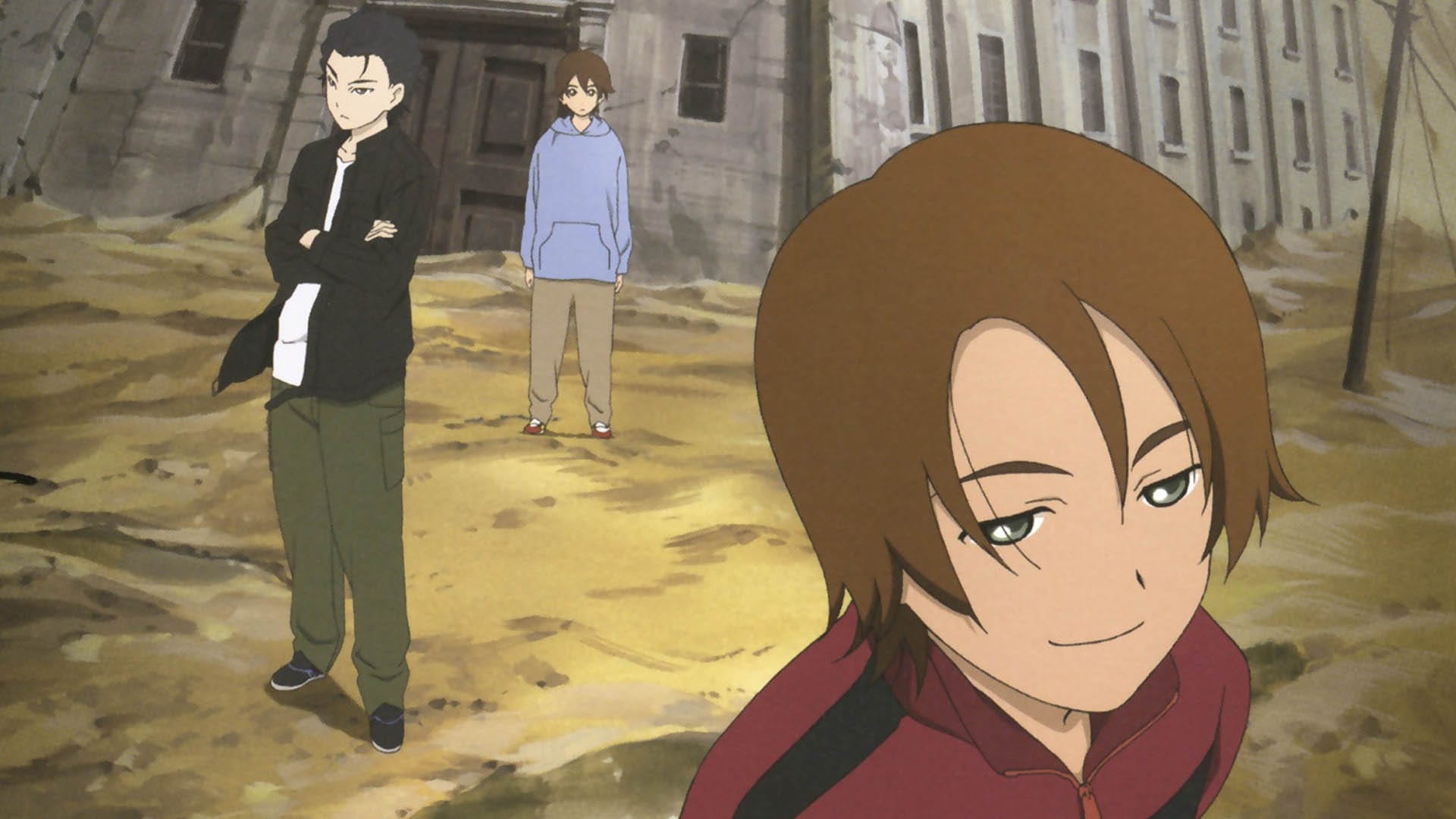
As they look at the mysterious kidnappings connected to their hometown, viewers are immersed in a place where the lines between the physical and dream realms, reality and memory, become increasingly indistinct.
Throughout the series, viewers are confronted with ethical dilemmas and existential questions as sci-fi and supernatural elements unsettle the boundaries of what is real and what is imagined.
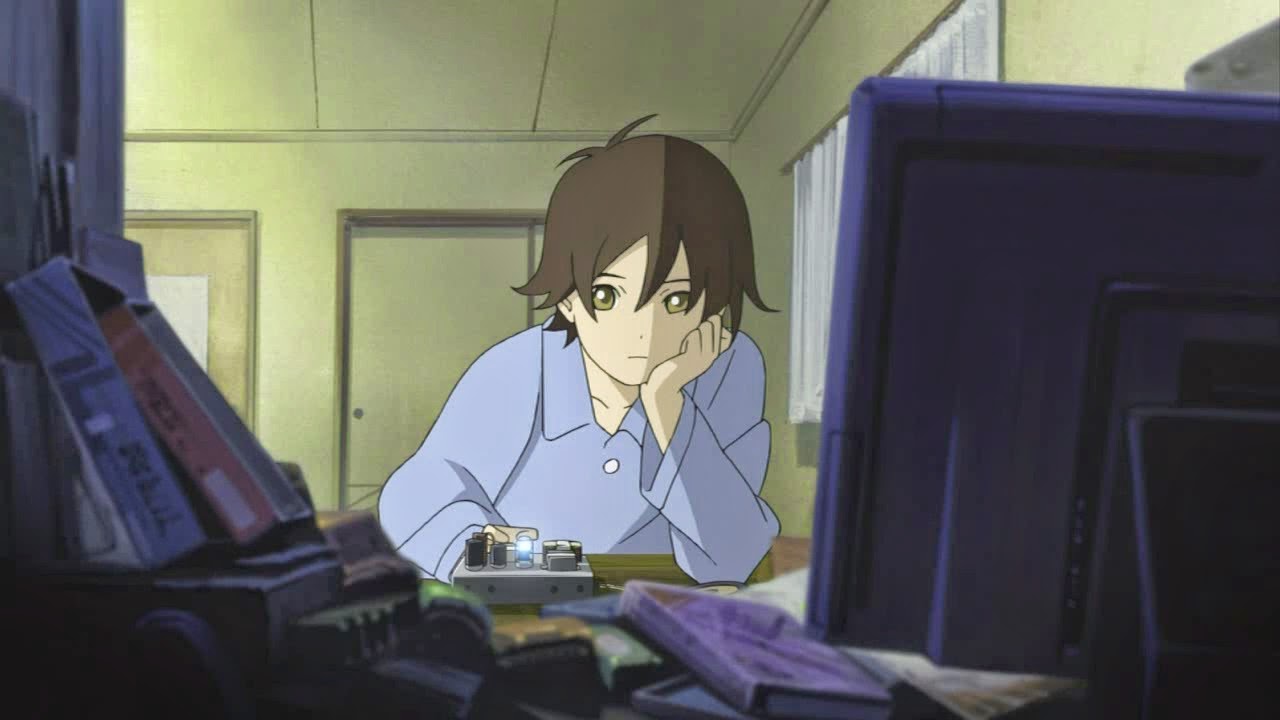
*Ghost Hound*, originally titled *Shinreigari/Ghost Hound*, is a Japanese anime television series produced by Production I.G and directed by Ryutaro Nakamura. The series, which premiered in 2007, marks the 20th anniversary of the production company. It’s particularly notable for its creative team, including Chiaki J. Konaka as the scriptwriter and Masamune Shirow (famous for works like *Ghost in the Shell*) as the original creator and concept designer.
The storyline of *Ghost Hound* is set in the small, remote village of Suiten, located in a secluded mountain region in Japan. The plot centers around three boys—Taro Komori, Masayuki Nakajima, and Makoto Ogami—each of whom has experienced traumatic events in their pasts that have left them emotionally scarred. Taro, the main protagonist, is particularly affected by the kidnapping and murder of his older sister when he was younger, an event that he barely survived.
The narrative dives deep into psychological and supernatural themes, following the boys’ encounters with the spirit world, known as the “Unseen World.” As the series progresses, the boundaries between dreams and reality, as well as the physical and spiritual worlds, begin to blur. This leads them to confront not only supernatural phenomena but also their inner traumas and fears.
The series is infused with elements of psychological horror, neuroscience, and shamanistic practices, creating a complex and intriguing exploration of the nature of consciousness and perception. The psychological depth is heightened by the involvement of the boys in therapy sessions, which reveal their subconscious thoughts and help them process their traumatic experiences.
*Ghost Hound* is often praised for its atmospheric sound design, created by Toshiyuki Inoue, which is integral to building the eerie and immersive experience of the series. Visually, the anime features stylized animation that suits its ghostly themes and psychological depth.
Ghost Hound is a series that appeals to viewers interested in a mix of psychological depth, supernatural elements, and philosophical inquiries into the nature of reality and the human mind. It stands out in the anime medium for its ambitious thematic exploration and its unique approach to storytelling.
4. The Ancient Magus’ Bride
“Magus’ Bride” presents a wonderful journey of self-discovery, magic, and the mysteries of the supernatural world, making it a fitting recommendation for fans of “Dark Gathering.”
The series follows Chise Hatori, a teenager who, after a traumatic childhood, finds herself sold at an underground supernatural slave auction. She is purchased by Elias Ainsworth, a mysterious magus, and becomes his apprentice and fiancée as she guides her tragic past and her newfound magical abilities.
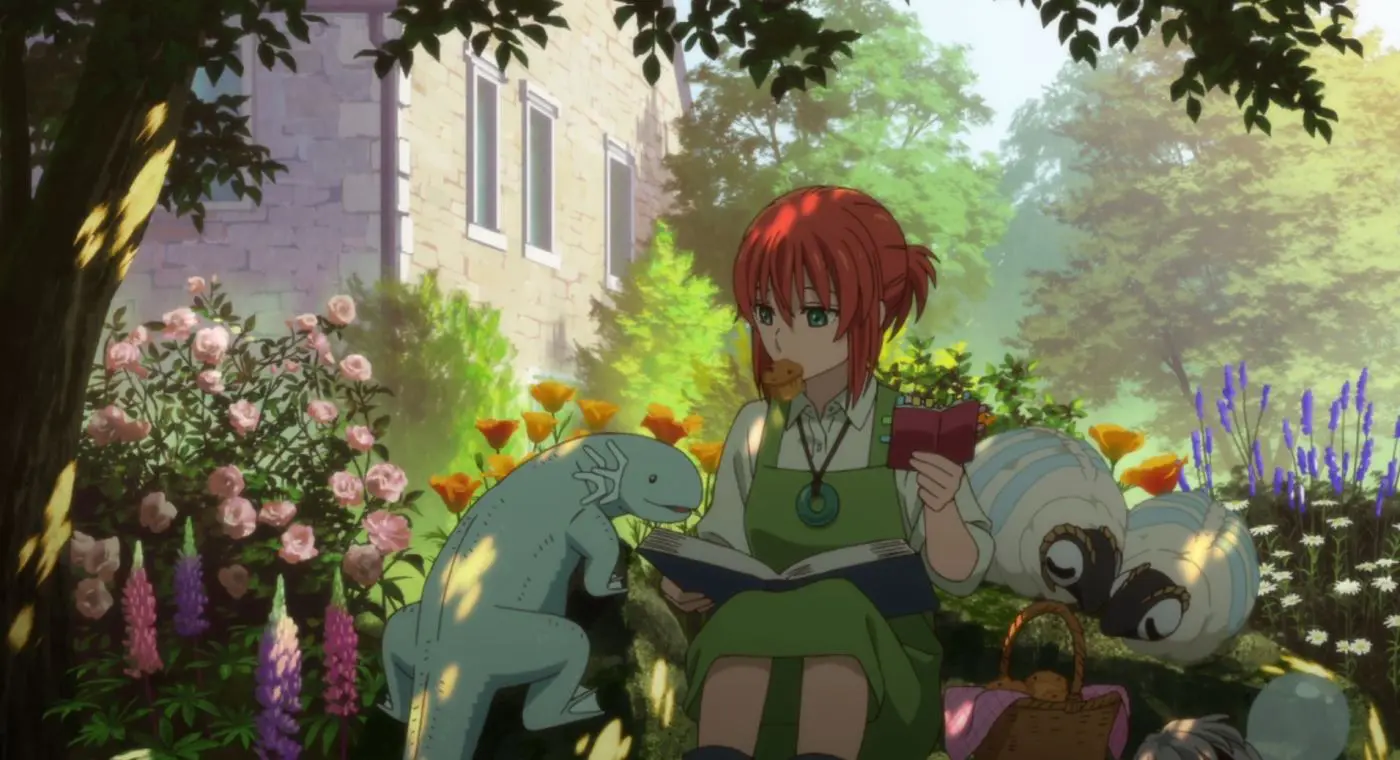
Wit Studio brings Kore Yamazaki’s dark fantasy world to life through stunning art and animation, immersing viewers in a richly detailed and visually beautiful. As Chise looks deeper into the magic, she encounters fae creatures, gargoyles, and fairy guardians, uncovering the secrets of her own past and the hidden realms that exist alongside humankind.
As Chise looks deeper into magic, she encounters fae creatures, gargoyles, and fairy guardians, uncovering the secrets of her own past.
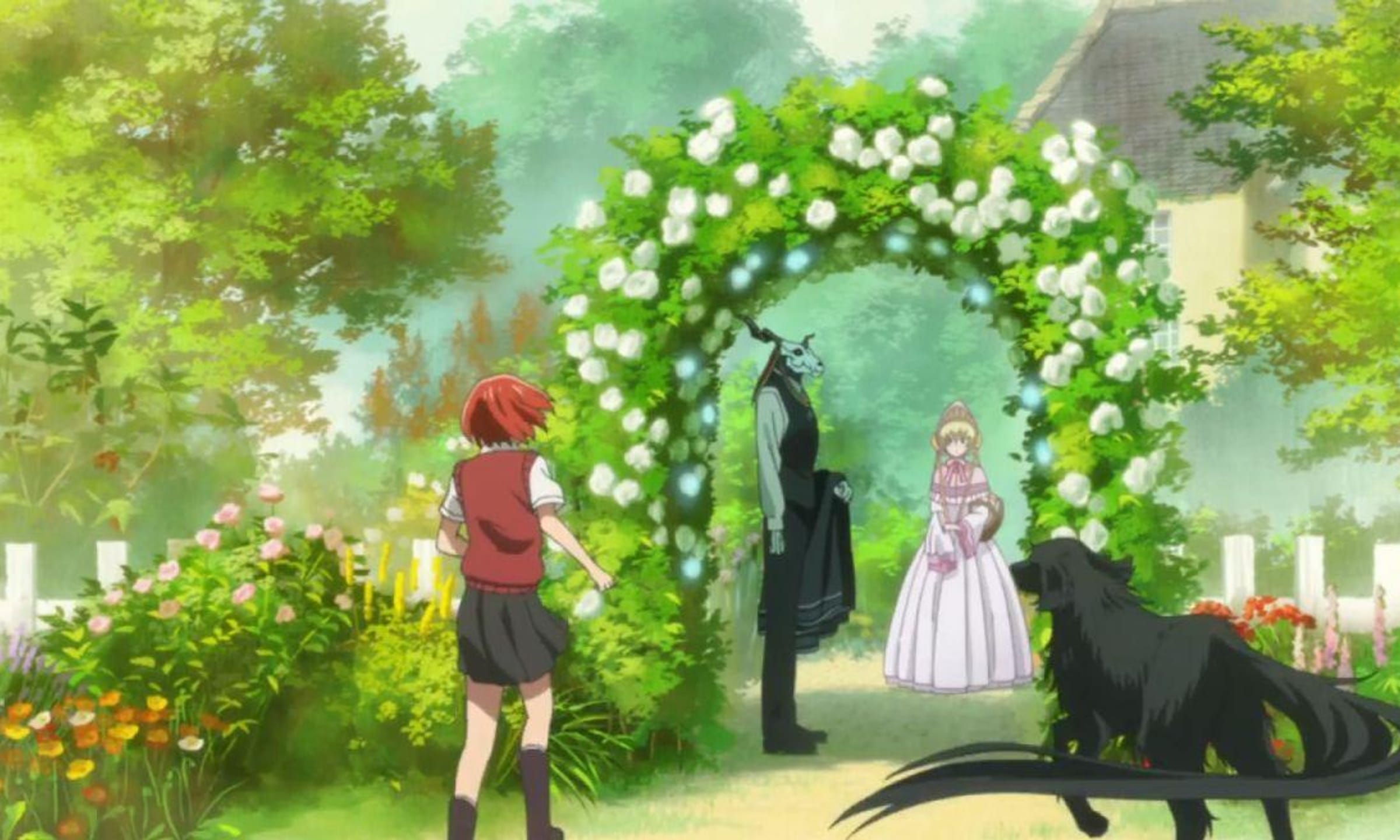
*The Ancient Magus’ Bride* (*Mahoutsukai no Yome*) is a Japanese manga series written and illustrated by Kore Yamazaki. It began serialization in 2013 and has been collected into several volumes, gaining considerable popularity and critical acclaim for its enchanting storytelling and beautiful artwork.
The story follows Chise Hatori, a 15-year-old Japanese girl who has lived a life beset by neglect and abuse. Alienated and desperate, she sells herself at an auction, where she is bought by a mysterious, skull-faced magus named Elias Ainsworth. Elias reveals that he is not human but a sorcerer of great power.
He takes Chise to his picturesque home in rural England and informs her that she is to become not only his apprentice in the magical arts but also his bride.
The Ancient Magus’ Bride follows themes of belonging, healing, and transformation. Chise, marked as a “Sleigh Beggy,” possesses the rare ability to draw magical energy from her surroundings, a power that is as burdensome as it is spectacular, often attracting various magical and mythical beings to her.
Throughout the series, her interactions with these beings and her growing relationship with Elias provide her with a sense of family and belonging that she has never experienced before.
The narrative goes into the complexities of their relationship—Elias, with his non-human nature and lack of understanding of human emotions, and Chise, with her traumatic past and vulnerability. Their dynamic is both fascinating and sometimes troubling, raising questions about dependency and identity.
#まどめ #madome
Just watch first 2 episodes of 'An Archdemon’s Dilemma: How to Love Your Elf Bride' and I like it.A good rom-com fantasy anime that you will like. It gives me the vibes of 'The Ancient Magus' Bride' anime. #HowToLoveYourElfBride @KieranFlitton @askforabigail pic.twitter.com/QH0oy26tdq— Pratim Ghosh (@PratimG11949053) May 3, 2024
The manga has been adapted into a prequel OVA series, The Ancient Magus’ Bride: Those Awaiting a Star, which focuses on Chise’s life before meeting Elias. The main manga series was also adapted into a well-received anime television series by Wit Studio, premiering in 2017. This adaptation is notable for its lush animation, detailed setting, and faithful representation of the manga’s spirit.
The Ancient Magus’ Bride is praised for its rich world-building, influenced by various cultural myths and folklore, particularly those of the British Isles. The series’ ability to weave these elements into a coherent and nice narrative, coupled with its strikingly detailed art, makes it a standout in the fantasy genre of manga and anime.
Fans and critics alike appreciate the depth of the characters and the slow, thoughtful exploration of their psychological landscapes. Chise’s growth from a despairing, passive character into a more empowered and active participant in her world is particularly compelling.
For those interested in a blend of magical fantasy, emotional depth, and beautiful art, *The Ancient Magus’ Bride* offers a unique and enriching experience that goes beyond typical storytelling in the genre.
5. Requiem from the Darkness
Requiem from the Darkness offers a haunting journey into Japan’s historic Taisho era, steeped in dark supernatural forces and ghostly legends, making it a compelling recommendation for fans of “Dark Gathering.” The series follows Momosuke Yamaoka, a gifted writer, as he documents eerie tales of the supernatural.
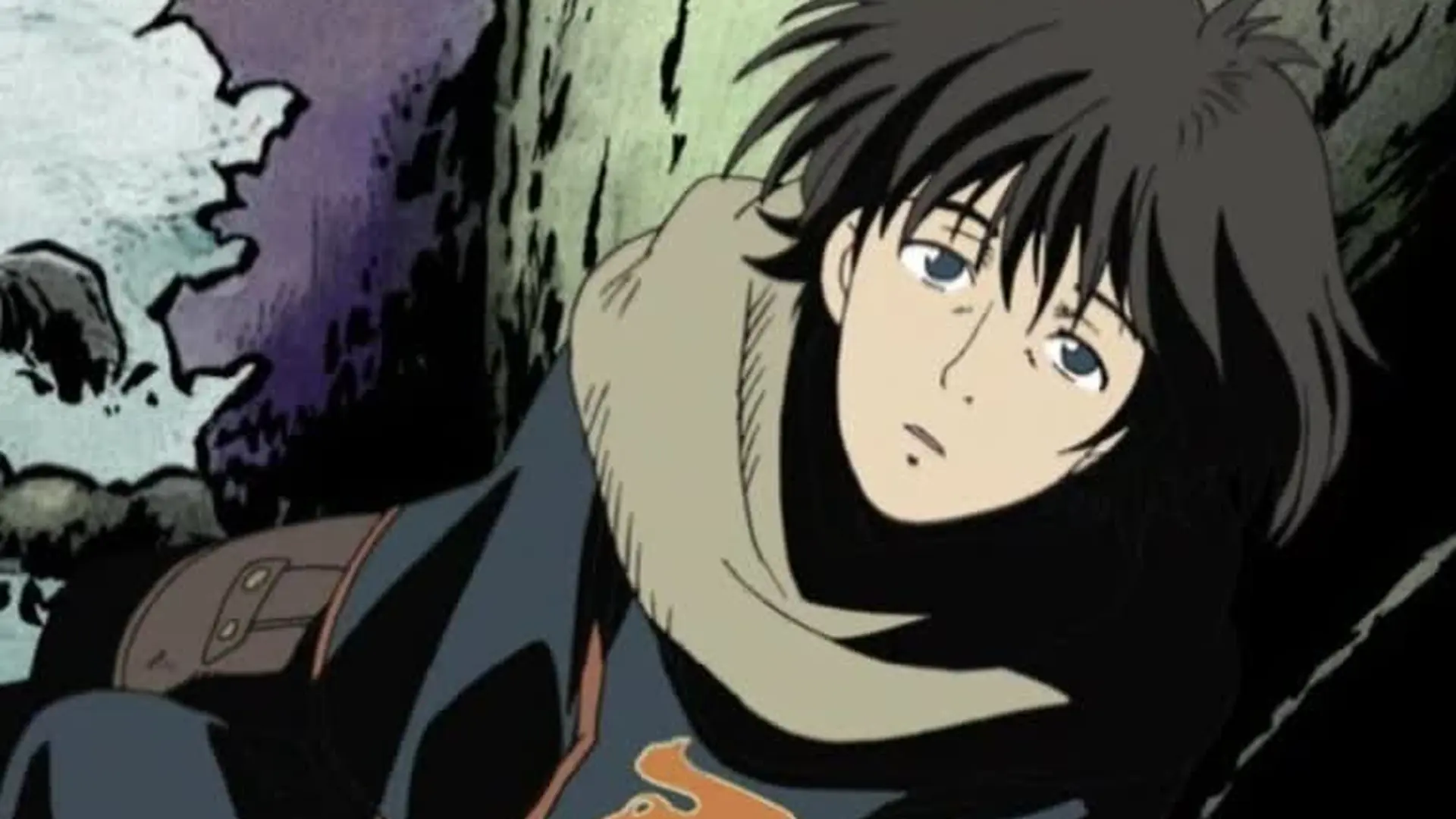
Accompanied by enigmatic guardians known as the Ongyou, Momosuke travels to rural towns to investigate sinister spirits that influence humans towards violence and madness. Drawing upon Japanese gothic horror and folklore traditions, Studio Pierrot imbues the anime with a gloomy atmosphere and eerie aesthetics that perfectly capture the anthology’s creepiness.
Requiem from the Darkness masterfully blends chilling stand-alone mysteries with an overarching story that looks into emotional depths, offering viewers a stunning and underappreciated choice among anime similar to “Dark Gathering.”
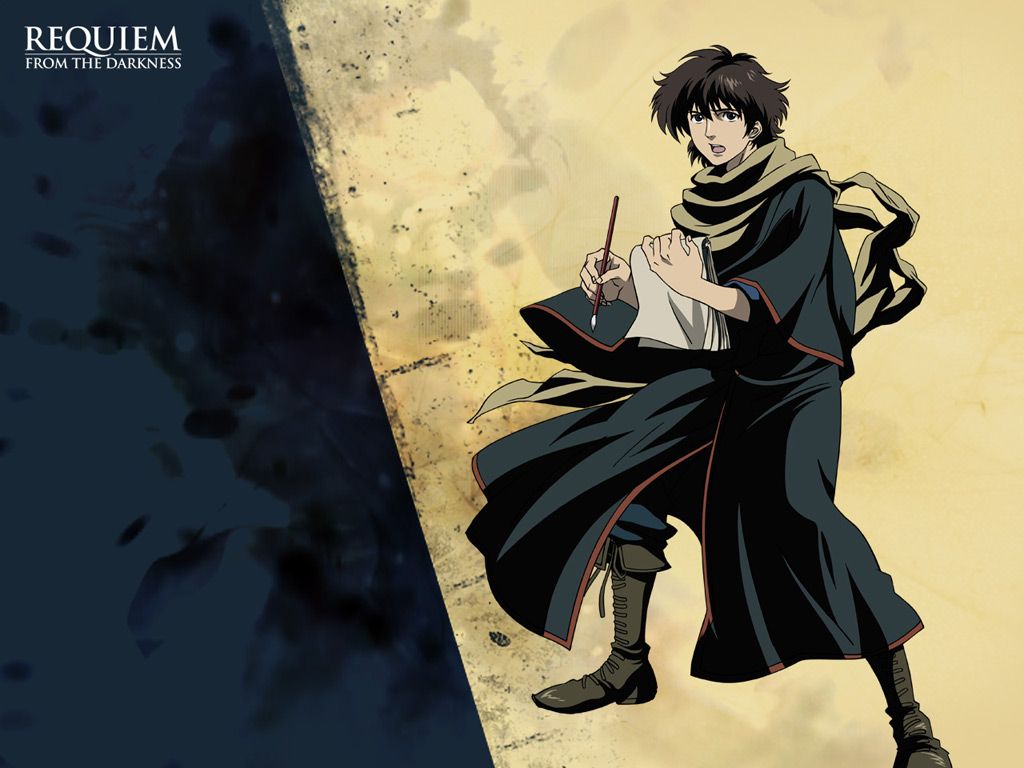
Requiem from the Darkness (original title: *Jigoku Shoujo*, meaning “Hell Girl”) is a Japanese anime series based on a manga by Miyuki Eto. The anime adaptation, directed by Takahiro Ōmori, aired in 2005 and consists of 26 episodes.
Requiem from the Darkness is set in feudal Japan and follows the story of a young author named Momosuke Yamaoka. Momosuke is fascinated by the supernatural and seeks out stories of the occult and mysterious occurrences. His quest for the truth leads him to encounter a group of three individuals who call themselves the Ongyou. The Ongyou are enigmatic figures who investigate and deliver justice to evildoers using their own twisted methods.
The leader of the Ongyou, Lady Ogin, offers Momosuke the opportunity to join them, and he reluctantly agrees to learn more about their dark methods. Together, they travel across the countryside, uncovering various cases of human depravity and exacting punishment upon the perpetrators.
Requiem from the Darkness may be the strangest anime I've watched in a while. Highly recommend. pic.twitter.com/Xh1ndwrfz2
— Kinger138 (@kinger138) January 28, 2021
Requiem from the Darkness is known for its eerie and atmospheric storytelling. Each episode presents a standalone story of human wickedness, often involving themes of greed, jealousy, and revenge.
Victims of injustice or wrongdoing can access a mysterious website called “Hell Correspondence,” where they can submit the name of their tormentor. In return, the Hell Girl, Ai Enma, appears to offer them a pact: she will ferry their target’s soul to hell but at the cost of the requester’s own soul being condemned to hell upon death.
The series follows the moral dilemmas of revenge and the consequences of seeking justice through supernatural means. As Momosuke goes deeper into the world of the Ongyou and Hell Correspondence, he grapples with the implications of their actions and struggles to understand the true nature of justice.
Requiem from the Darkness is visually striking, with a dark and moody aesthetic that complements its thematic content. The animation emphasizes the macabre and grotesque elements of the stories, adding to the all sense of foreboding and mystery.
The series received positive reviews for its unique blend of horror, psychological drama, and historical setting. It has been praised for its thought-provoking narratives and its exploration of human nature and morality through the lens of supernatural folklore.
For viewers interested in dark, episodic storytelling with a touch of the supernatural and philosophical inquiry, Requiem from the Darkness offers a compelling and haunting viewing experience.
6. Mushishi
“Mushishi” presents a serene and thought-provoking supernatural world, making it an excellent recommendation for fans of “Dark Gathering.” The series follows the wandering “mushishi” Ginko, who investigates the mysteries surrounding ethereal beings known as “Mushi” – creatures unseen by most humans. Often existing at the fringes of the natural world, Mushi can transition from benign to threatening based on changes in their environment.
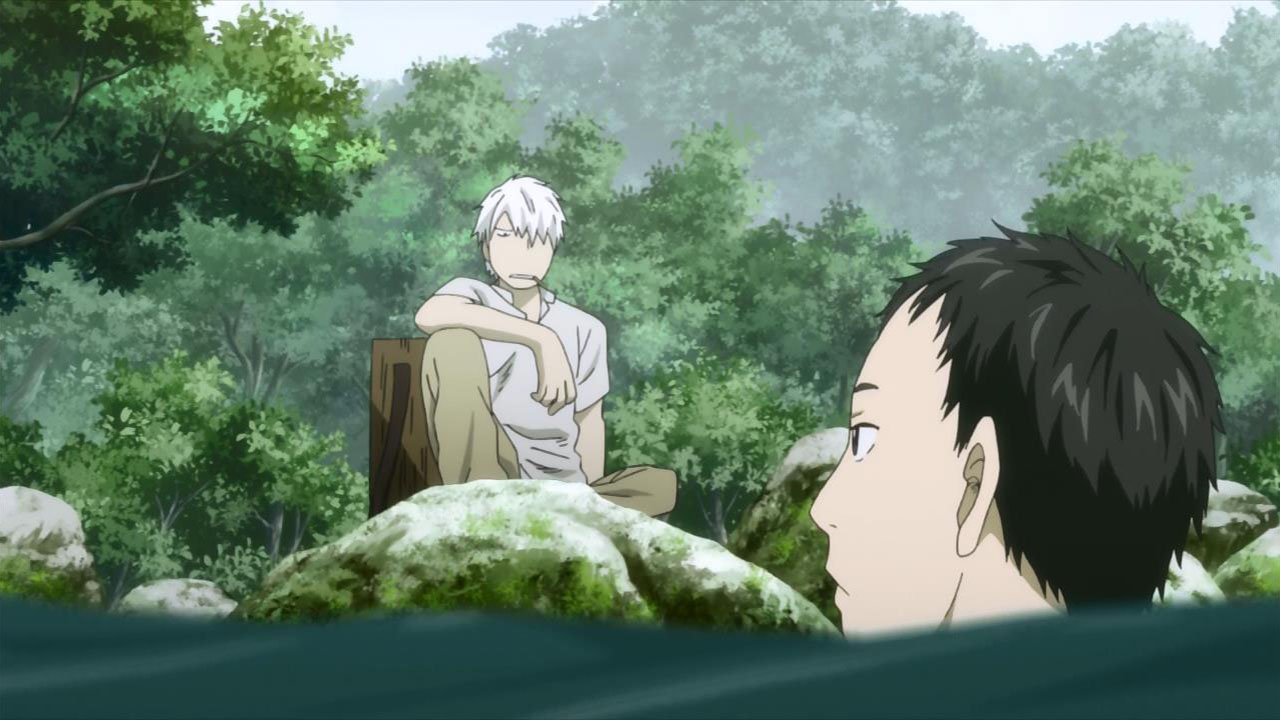
Throughout the episodic series, viewers are treated to breathtaking and tranquil as Ginko aids those afflicted by Mushi’s influence. Each episode reveals thoughtfully crafted lessons on change and the interconnectedness of beings at the edge of human understanding.
While “Mushishi” may be more philosophical than frightening, its emphasis on spirits reflecting human emotional turbulence resonates deeply with fans seeking anime similar to “Dark Gathering.”
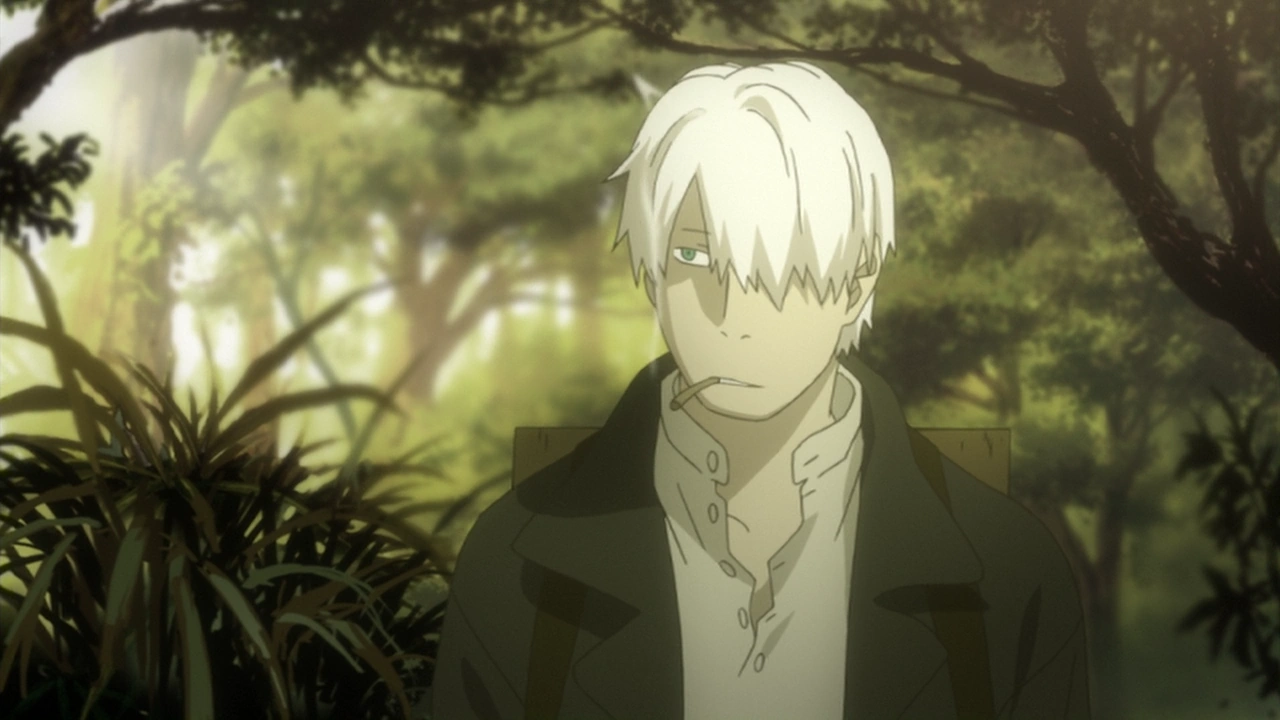
Mushishi is a beautifully crafted Japanese manga series written and illustrated by Yuki Urushibara. It was serialized from 1999 to 2008 and collected into ten tankōbon volumes. The series has garnered widespread acclaim for its unique storytelling, serene atmosphere, and deep exploration of nature and human existence.
Set in a mystical version of historical Japan, *Mushishi* follows the journey of Ginko, a “Mushi Master” who travels from village to village, investigating and resolving issues related to “Mushi.”
Mushi are primitive life forms that exist in a spectrum between the physical and spiritual worlds. They are neither plants nor animals but possess unique characteristics and abilities that often cause disturbances in the natural order.
Ginko, with his keen understanding of Mushi and its effects on humans and the environment, assists people afflicted by Mushi-related phenomena. Each episode or chapter of *Mushishi* is a self-contained story, showcasing Ginko’s encounters with different types of Mushi and the profound impact they have on the lives of those he meets.
*Mushishi* is renowned for its contemplative exploration of themes such as the interconnectedness of life, the delicate balance of nature, and the mysteries of existence. The series emphasizes the coexistence between humans and the natural world, portraying Mushi as integral components of the ecosystem rather than malevolent entities.
The atmosphere of Mushishi is tranquil and introspective, characterized by lush landscapes, subdued color palettes, and a hauntingly beautiful soundtrack. The slow pacing and meditative tone invite viewers to reflect on deeper philosophical questions about life, mortality, and the transient nature of existence.
mushishi was just reminding us to work on our own stuff, the ultimate state of freedom pic.twitter.com/eaFLgXRAMl
— kayhe (@selfhostedmind) April 22, 2024
Yuki Urushibara’s artwork in Mushishi is evocative and ethereal, capturing the ethereal qualities of Mushi and the mystical ambiance of the settings. The art emphasizes natural elements such as forests, rivers, and mountains, enhancing the series’ immersive and atmospheric storytelling.
In addition to the manga, Mushishi was adapted into an anime television series produced by Artland. The anime faithfully captures the mood and spirit of the manga, with each episode adapting a different story from the source material.
The anime adaptation received critical acclaim for its visual fidelity, subdued animation, and faithful adaptation of Urushibara’s intricate world.
*Mushishi is widely regarded as a masterpiece of its genre, appealing to both fans of supernatural fiction and those seeking a more contemplative and philosophical viewing experience. It has won numerous awards and accolades, cementing its status as a standout work in manga and anime.
For viewers looking for a thought-provoking and visually nice series that follows the mysteries of nature and the human spirit, *Mushishi* remains a timeless and highly recommended choice. Its emphasis on introspection, empathy, and the wonders of the natural world continues to resonate with audiences seeking meaningful storytelling in anime.
7. Mononoke
“Mononoke” offers a wonderful and haunting journey through feudal Japan, making it a fitting recommendation for fans of “Dark Gathering.” The anime follows the wandering medicine seller as he encounters malicious spirits that plague humans along his travels. In each story arc, he looks deep into the mononoke’s form, truth, and reasoning before ultimately wielding his Exorcising Sword to vanquish it.
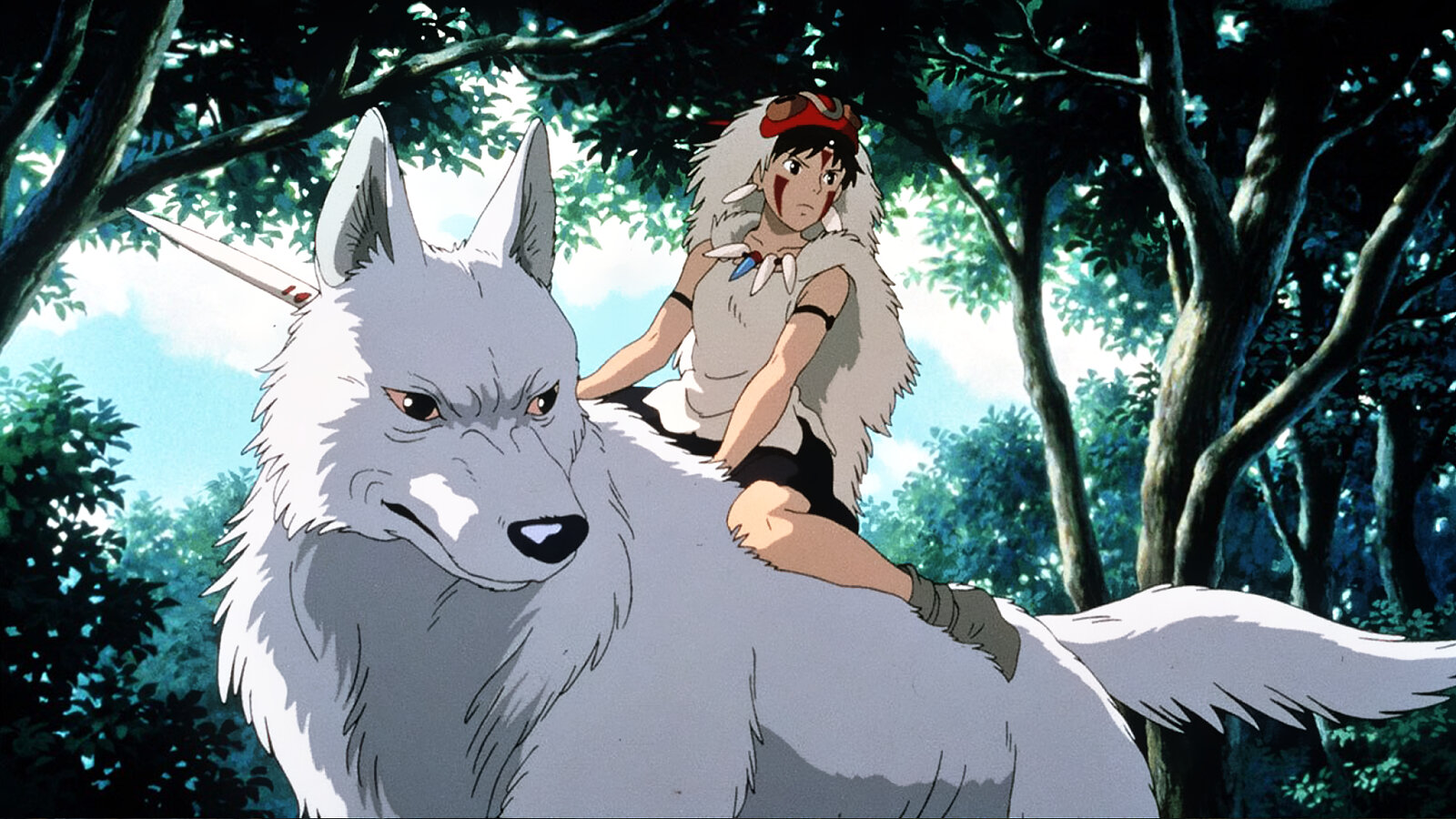
Haunting journey through feudal Japan, making it a fitting recommendation for fans of “Dark Gathering.” The anime follows the wandering medicine seller as he encounters malicious spirits that plague humans along his travels.
With its experimental animation style and vibrant portrayal of Japanese folklore entities, “Mononoke” immerses viewers in a world of ghostly tales and thoughtfully crafted themes examining moral grays. Through the unique storytelling and visually stunning animation by Toei Animation, the series breathes life into these supernatural encounters, offering a rich and immersive experience for audiences.
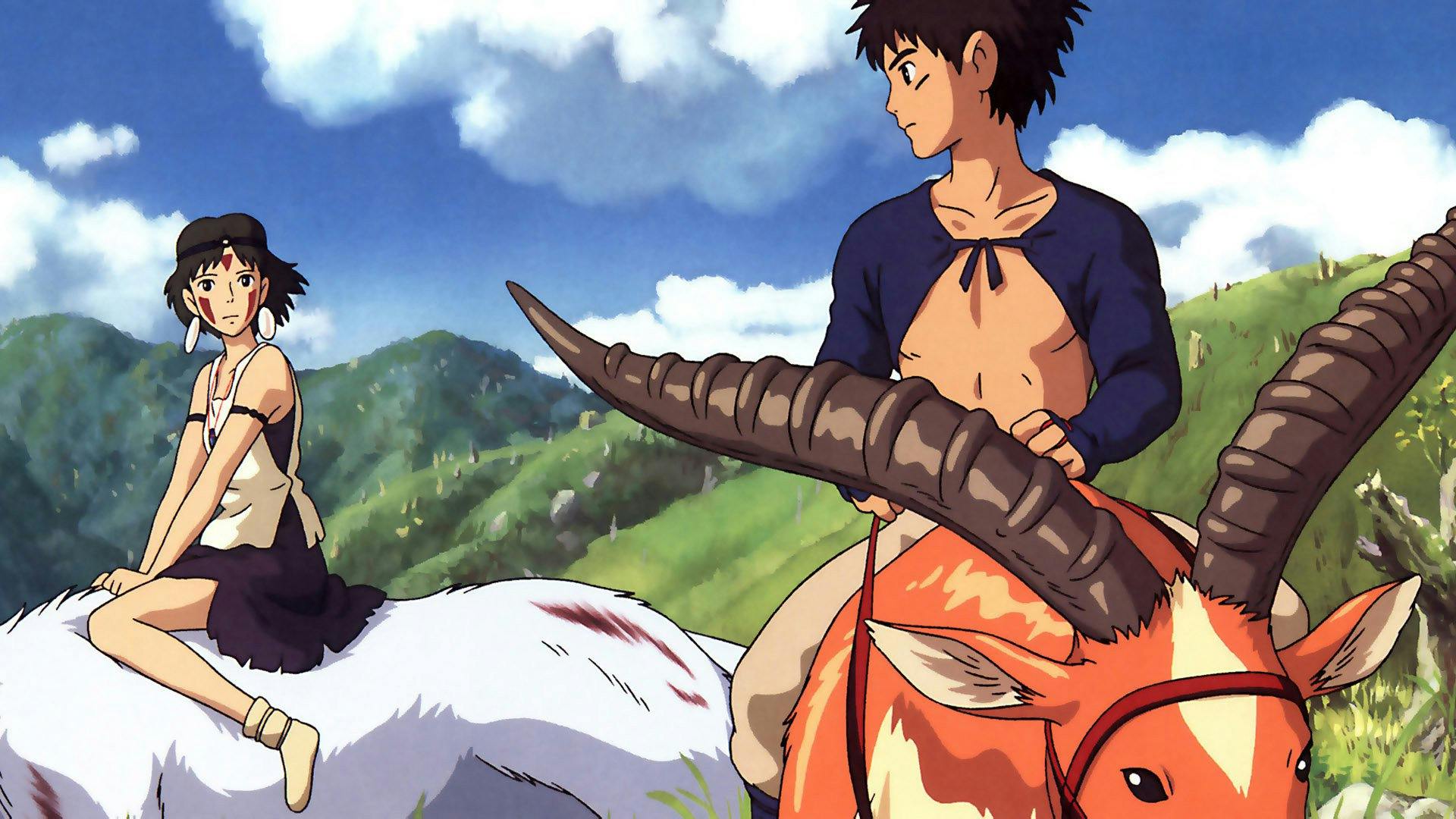
Mononoke is a unique and visually stunning Japanese anime series that aired in 2007, produced by Toei Animation. It is a spin-off of the *Ayakashi: Samurai Horror Tales* anime series, specifically adapting the “Bakeneko” arc from that series. Directed by Kenji Nakamura, *Mononoke* consists of 12 episodes and is renowned for its striking art style and complex storytelling.
The series follows a mysterious and enigmatic protagonist known only as the “Medicine Seller” (Kusuriuri), who travels through feudal Japan during the Edo period. The Medicine Seller possesses spiritual abilities that allow him to exorcise malevolent spirits known as “Mononoke.” However, to do so, he must first uncover the Mononoke’s Form, Truth, and Reason.
Each episode of Mononoke is a self-contained story centered around the Medicine Seller encountering a Mononoke haunting a particular location or individual. The Medicine Seller, armed with his sword and deep knowledge of the supernatural, must investigate the circumstances surrounding the Mononoke’s manifestation and find the secrets that bind it to this world.
One of the most distinctive aspects of *Mononoke* is its visual style, which combines traditional Japanese art with avant-garde design elements.
The animation is highly stylized, with vibrant colors, intricate patterns, and surreal imagery that evoke the aesthetics of ukiyo-e (woodblock prints) and other traditional Japanese art forms. This unique artistic direction contributes significantly to the series’ eerie and dreamlike atmosphere.
"Mononoke The Movie: Karakasa" New Visual Reveal!!
Air Date: July 26, 2024
Animation Studio: EOTAImage © Twin Engine, Anime Production Committee pic.twitter.com/mumeiBvuUb
— Manga Mogura RE (Manga & Anime News) (@MangaMoguraRE) May 1, 2024
Mononoke goes deep into themes of folklore, psychology, and the supernatural. Each episode follows human emotions and motivations, often rooted in trauma, guilt, or repressed desires, which give rise to the manifestation of Mononoke. The series challenges viewers to confront the darker aspects of human nature and the consequences of unresolved inner turmoil.
Symbolism plays a crucial role in *Mononoke*, with recurring motifs and visual cues adding layers of meaning to each story. The Medicine Seller’s role as a spectral figure who find the boundaries between the living and the dead embodies themes of balance and transcendence.
Mononoke received critical acclaim for its innovative storytelling, nice visuals, and atmospheric soundtrack. It has gained a cult following among anime enthusiasts who appreciate its artistic ambition and intellectual depth.
The series stands out as a prime example of anime that pushes the boundaries of conventional storytelling and follows profound themes through a distinctively artistic lens.
For fans of psychological horror, supernatural mysteries, and avant-garde animation, *Mononoke* offers a compelling and immersive viewing experience that continues to resonate with audiences seeking thought-provoking and visually arresting anime.
8. Ghost Hunt
“Ghost Hunt” offers a thrilling and supernatural journey that echoes the strengths of “Dark Gathering,” making it an excellent recommendation for fans of the latter.
The series follows teenager Mai Taniyama, who inadvertently becomes an assistant to Kazuya Shibuya, nicknamed Naru the Narcissist, a renowned investigator at Shibuya Psychic Research. Together, they take on investigations that reveal Mai’s latent psychic talents for tuning into supernatural phenomena, including sinister spirits.
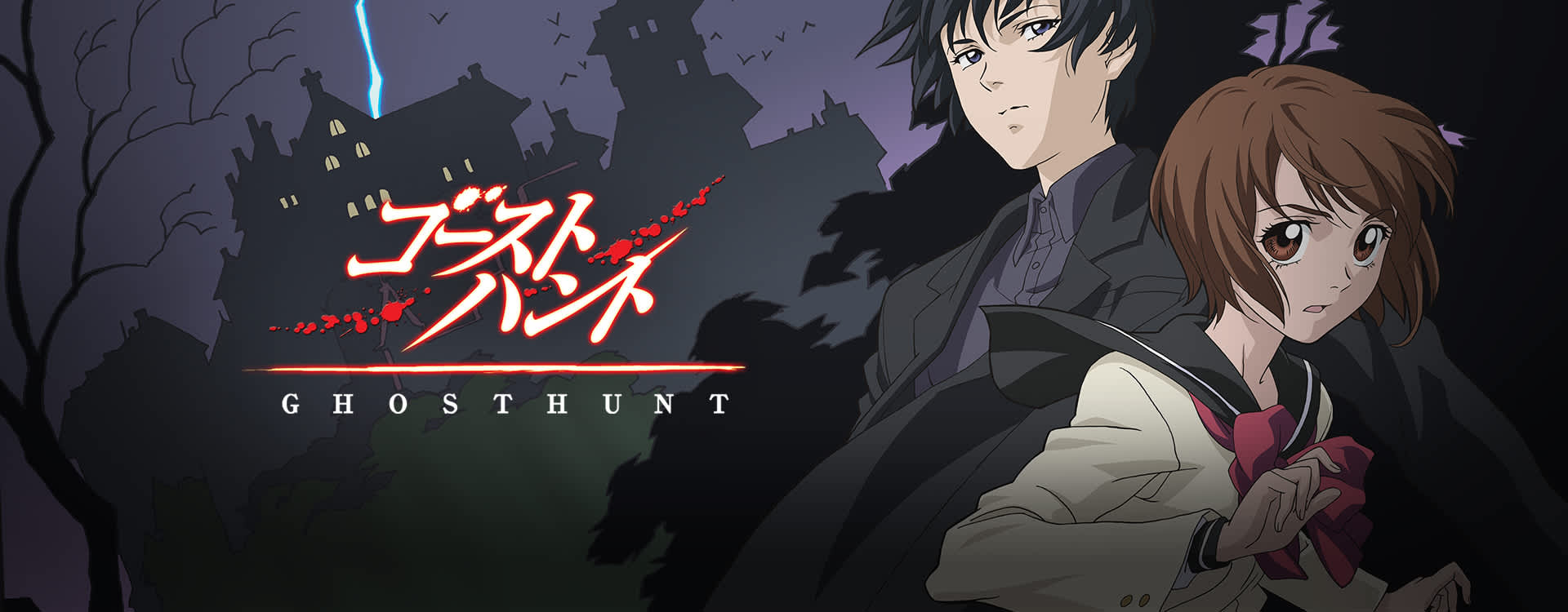
J.C. Staff’s adaptation of Fuyumi Ono’s light novels expertly balances paranormal cases of the week with emotional character development, anchored by Mai’s growth into her intuition and the friendships she forms along the way. As they look into haunted locations and confront malevolent entities, the series delivers both scares and secrets that deeply affect the living.
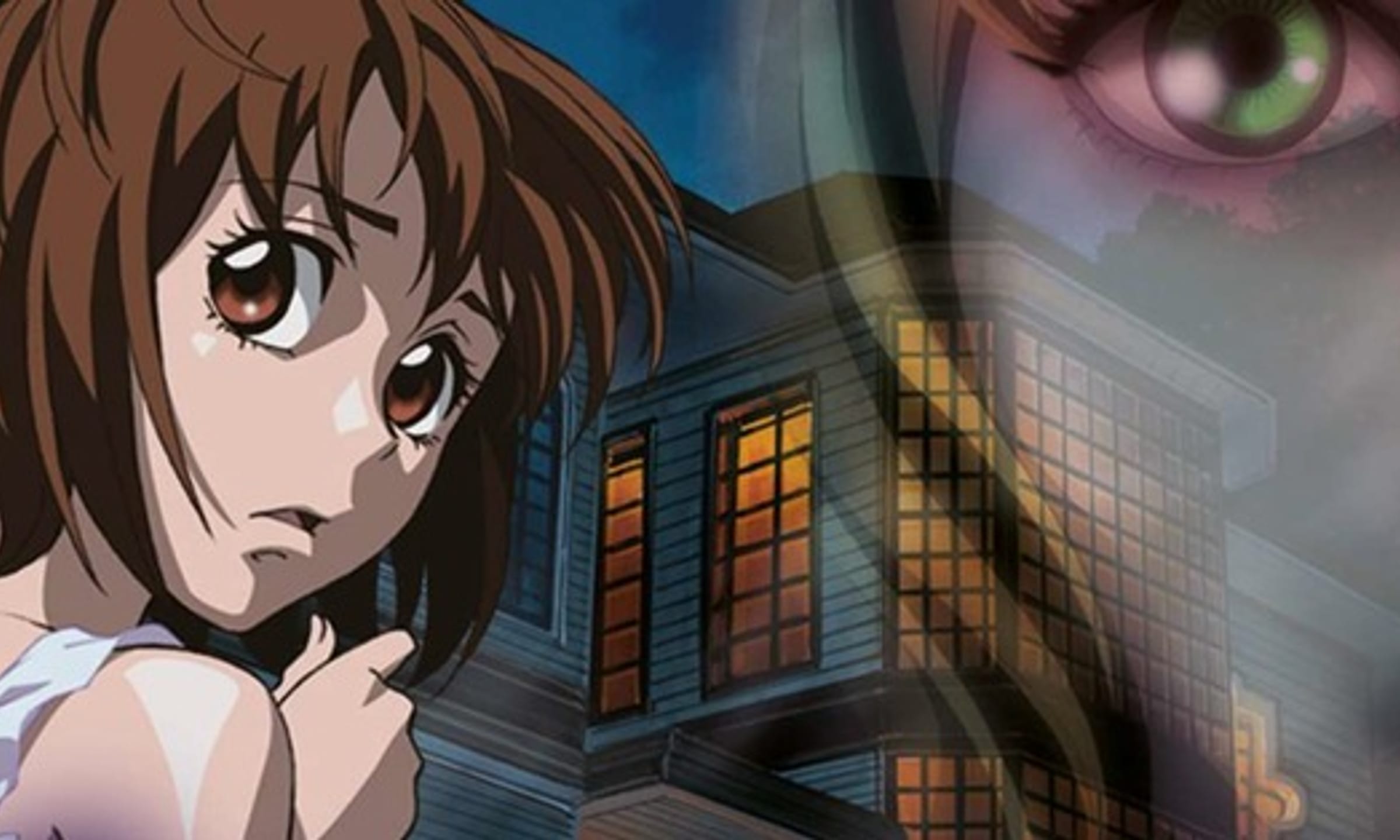
Ghost Hunt is a Japanese anime and manga series created by Fuyumi Ono. The story revolves around paranormal investigations conducted by a group of individuals known as Shibuya Psychic Research (SPR). The series blends elements of horror, mystery, and supernatural drama, making it a suspenseful watch.
In Ghost Hunt, Mai Taniyama, the protagonist, accidentally breaks a camera owned by Kazuya Shibuya, the president of SPR. As compensation for the damage, Mai is recruited as an assistant by Shibuya, who is also known as Naru. The SPR team consists of various members with unique psychic abilities and skills in paranormal investigation.
Together, they get on investigations into haunted locations, attempting to uncover the truth behind supernatural occurrences and mysterious phenomena. The cases they encounter range from ghostly apparitions and curses to poltergeists and malevolent spirits.
Recommending Ghost Hunt anime once again. You'll binge it and beg for more. 🖤🖤 pic.twitter.com/KIuGSz4zZG
— cj_wheelwright 🖤's the Otherworldly (@cj_wheelwright) August 1, 2022
Ghost Hunt goes into themes of the supernatural, human psychology, and the exploration of fear. Each story arc presents a different paranormal mystery, with the SPR team utilizing scientific and psychic methods to find the truth behind the hauntings.
The series effectively builds suspense and tension through atmospheric settings, eerie sound design, and well-executed horror elements. Viewers are drawn into a world where the line between the living and the dead is blurred, and each investigation leads to unexpected revelations.
Ghost Hunt originated as a light novel series written by Fuyumi Ono. It was later adapted into a manga series illustrated by Shiho Inada, which ran from 1998 to 2010. The anime adaptation aired in 2006 and consists of 25 episodes, covering various story arcs from the manga.
Ghost Hunt has garnered a dedicated fan base, particularly among enthusiasts of supernatural and mystery genres. The series is praised for its intriguing cases, well-developed characters, and effective use of horror elements. It remains a popular choice for viewers seeking supernatural thrills and engaging storytelling.
Ghost Hunt offers a compelling blend of paranormal investigation, psychological suspense, and character-driven drama, making it a must-watch for fans of supernatural anime and mystery enthusiasts.
9. Twin Star Exorcist
“Twin Star Exorcists” presents a tale of exorcists battling supreme evil specters in order to purge the world of darkness, making it a compelling recommendation for fans of “Dark Gathering.”
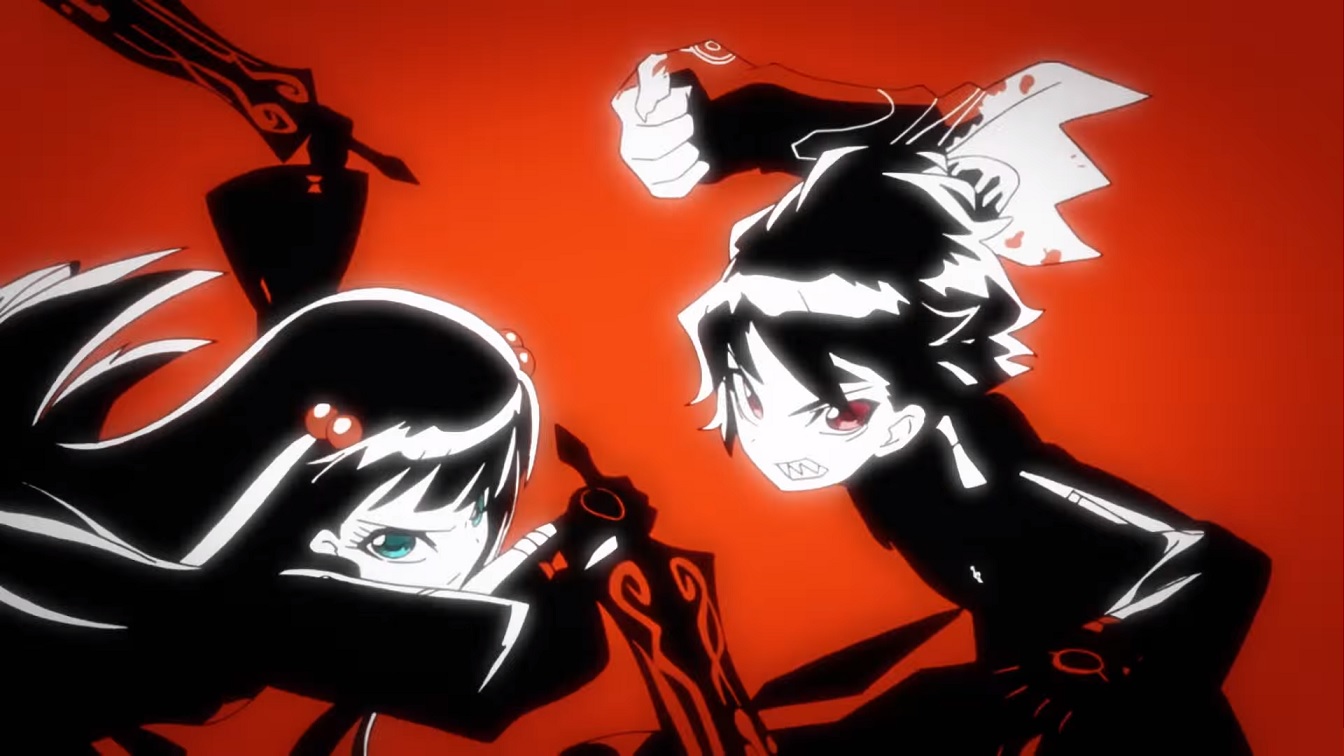
The series follows Rokuro Enmadō, an exorcist prodigy, and Benio Adashino, his fated partner, as they train on missions to confront demonic threats plaguing humanity. Rokuro and Benio each harbor their own personal grudges against the forces of evil, and together, they challenge ghoulish foes in intense action sequences brought to life by Pierrot Studio’s adaptation of Yoshiaki Sukeno’s popular shonen manga.
Through its exploration of distinct forms and motivations driving paranormal forces, “Twin Star Exorcists” looks into intriguing concepts that resonate with fans of supernatural anime like “Dark Gathering.”
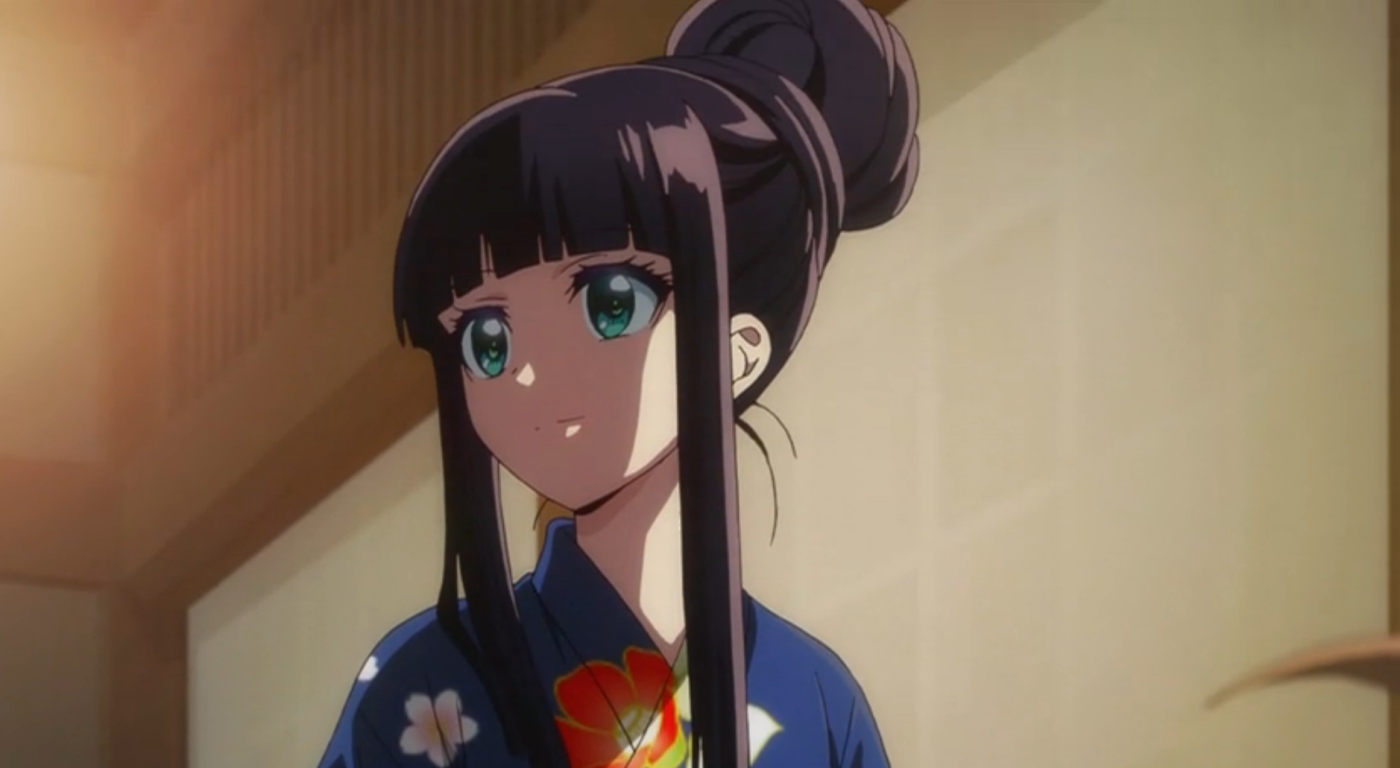
Twin Star Exorcists (Japanese: *Sousei no Onmyouji*) is a Japanese manga series written and illustrated by Yoshiaki Sukeno. It was serialized in *Jump Square* magazine from 2013 to 2021 and collected into 24 tankōbon volumes. The manga was adapted into an anime television series produced by Studio Pierrot, which aired from 2016 to 2017.
The story of Twin Star Exorcists is set in a world where malevolent spirits known as “Kegare” threaten humanity. To combat these creatures, exorcists with special spiritual powers known as “Onmyouji” are tasked with protecting the world.
Among the exorcists, there is a prophecy that a pair of powerful exorcists, the “Twin Star Exorcists,” will be born to conceive the ultimate spiritual child who will eliminate all Kegare.
The protagonists of the series are Rokuro Enmadou and Benio Adashino. Rokuro was once a talented young exorcist but lost his motivation after a tragic incident.
Benio is a determined and skilled exorcist who seeks to avenge her family’s death at the hands of Kegare. Fate brings Rokuro and Benio together, and despite their initial differences, they are identified as the Twin Star Exorcists by the head of the Exorcist Union.
As the series progresses, Rokuro and Benio must overcome their personal demons and work together to fulfill their destiny. Along the way, they face powerful enemies, encounter other exorcists and spirits, and uncover secrets about their own pasts.
twin star exorcists is too underrated man pic.twitter.com/2sOrSxn2HA
— Twin (@woahhtwin) April 26, 2024
Twin Star Exorcists follows themes of destiny, partnership, and growth. Rokuro and Benio start off as reluctant allies but gradually develop a deep bond as they face challenges together. Their journey is not just about defeating supernatural foes but also about confronting their inner struggles and learning to accept their roles as saviors of humanity.
The series features intense action sequences, supernatural battles, and character-driven drama. It combines elements of shonen (targeted towards young male audiences) with romance and supernatural themes, appealing to a broad range of viewers.
In addition to the manga and anime series, *Twin Star Exorcists* has spawned light novels, video games, and other related media. The anime adaptation covers a significant portion of the manga’s storyline but diverges towards the later episodes, offering an alternate ending to the narrative.
Twin Star Exorcists has received mixed reviews, with praise for its character development, action scenes, and world-building but criticism for pacing issues and deviations from the source material in the anime adaptation. Despite this, the series has maintained a dedicated fan base and continues to be recognized for its dynamic storytelling and engaging characters.
For fans of supernatural action series with a focus on character relationships and growth, *Twin Star Exorcists* offers an exciting and emotionally resonant journey through a world filled with spirits, magic, and destiny.
10. Paranoia Agent
“Paranoia Agent” looks into the depths of a dark urban mystery, drawing viewers into a surreal world tinged with supernatural energy, making it a choice for fans of “Dark Gathering.” The anime follows detective Keiichi Ikari as he investigates a series of bizarre attacks plaguing Tokyo, with a shy character designer nicknamed Lil’ Slugger emerging as the prime suspect.
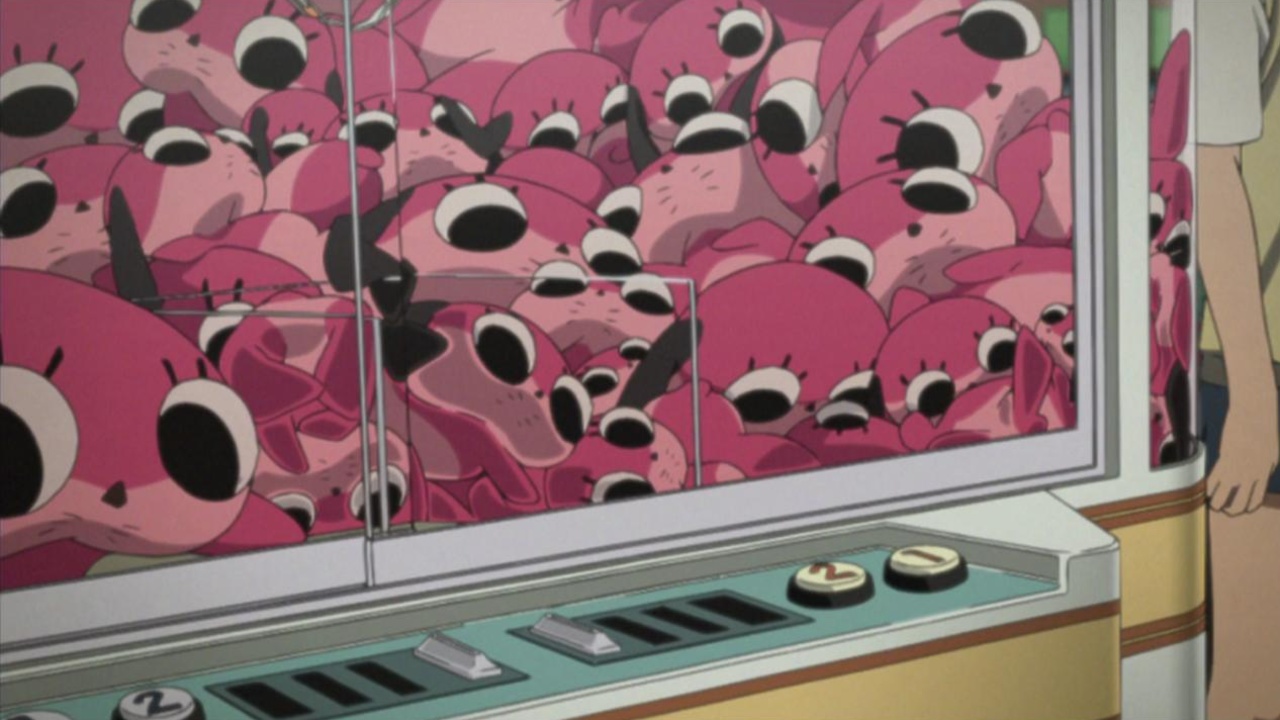
Directed by master filmmaker Satoshi Kon, the series unfolds through an experimental animated style crafted by Madhouse Studios, immersing viewers in a visually stunning and psychologically rich narrative.
As the story unfolds, “Paranoia Agent” looks at themes of stress-fueled hysteria and the manifestation of urban legends, looking into the concept of Tulpas and the fraying psyches of its characters.
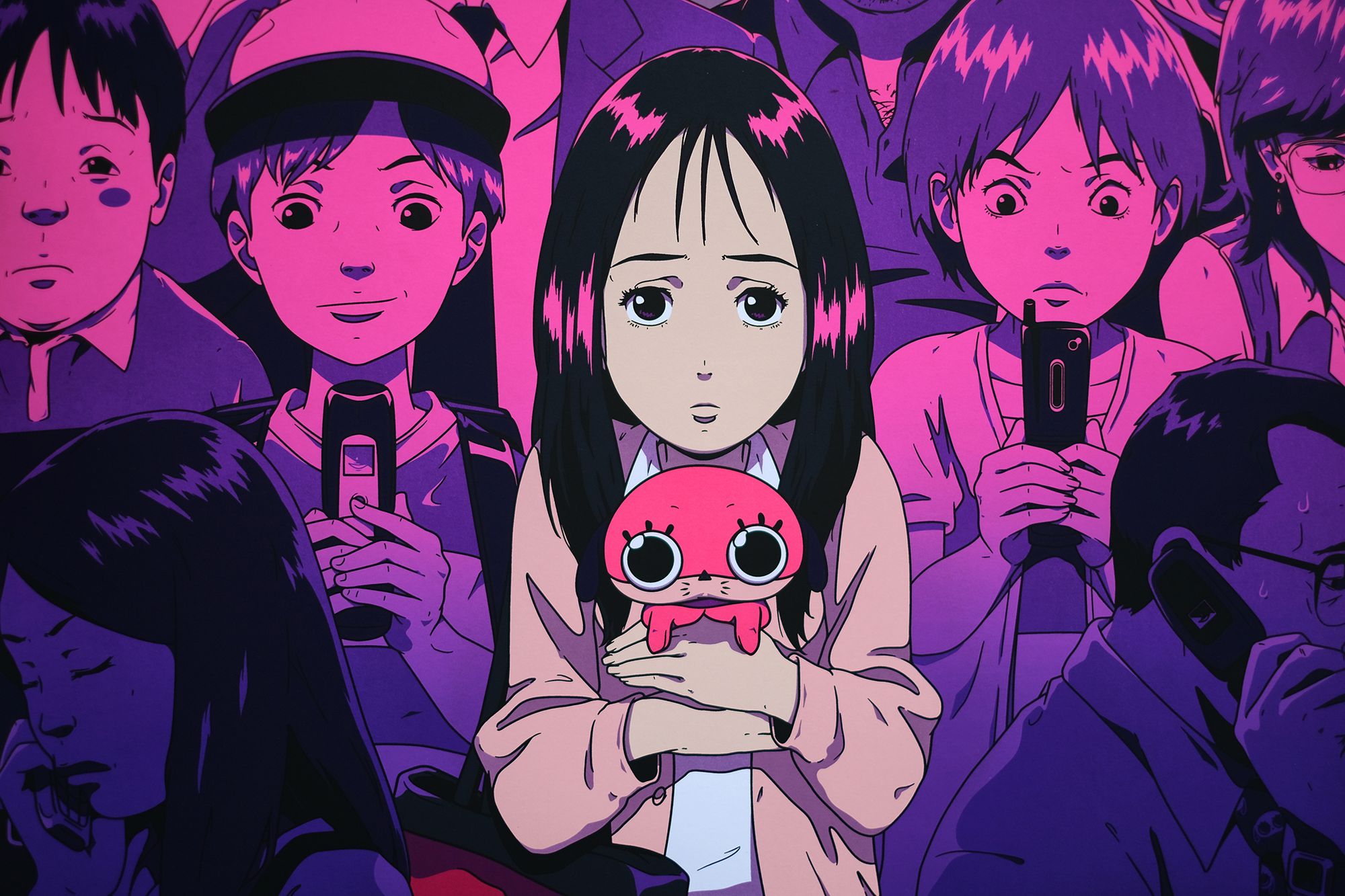
Paranoia Agent (Japanese: *Mousou Dairinin*) is a psychological thriller anime series created by Satoshi Kon, known for his distinctive style and thought-provoking storytelling. The series originally aired in 2004 and consisted of 13 episodes.
Paranoia Agent takes place in modern-day Tokyo and revolves around a series of mysterious assaults perpetrated by a young boy wielding a golden baseball bat. This boy, known as “Shonen Bat” (Lil’ Slugger in the English dub), becomes the focus of public attention and media frenzy as the attacks continue.
However, as the investigations deepen, it becomes increasingly unclear whether Shonen Bat is a real person or a manifestation of something more elusive and sinister.
The narrative of *Paranoia Agent* unfolds through interconnected stories, each focusing on different characters affected by the attacks. These characters include detectives, journalists, victims, and witnesses, all grappling with their own personal demons and anxieties. As the series progresses, reality blurs with hallucinations, and themes of paranoia, anxiety, and societal pressure come to the forefront.
Paranoia Agent follows a wide range of themes related to modern society and the human psyche. The series goes into the effects of stress, alienation, and societal expectations on individuals, illustrating how these factors can lead to breakdowns in mental health and perceptions of reality.
I just finished the 13 episodes of Paranoia Agent, a psychological thriller series, the series manages to captivate the viewer with its thriller style with moments where it doesn't take itself seriously, it has an excellent animation style, very interesting characters.
Rating 9 pic.twitter.com/dWBT5lPgn1— Tony アンソニー 🇮🇹 (@TonySnyderVerse) May 2, 2024
Satoshi Kon’s signature storytelling style is evident in *Paranoia Agent*, blending elements of mystery, surrealism, and psychological horror. The series challenges viewers to question the nature of truth and fiction, presenting a narrative that is both thought-provoking and disorienting.
The animation and art direction of *Paranoia Agent* are striking and innovative, featuring Satoshi Kon’s trademark use of visual metaphors and dreamlike sequences. The character designs and backgrounds reflect the psychological themes of the series, with distorted perspectives and shifting realities adding to the nice sense of unease and uncertainty.
Paranoia Agent received critical acclaim for its ambitious storytelling, complex characters, and thematic depth. It has been praised for its exploration of societal issues and psychological trauma, offering a unique perspective on the anxieties of contemporary urban life.
The series remains a cult favorite among fans of psychological thrillers and anime enthusiasts interested in Satoshi Kon’s work. Its impact on the anime industry can be seen in its influence on subsequent series that follow similar themes of psychological introspection and societal critique.
For viewers seeking an intellectually stimulating and visually nice anime experience, *Paranoia Agent* offers a masterclass in psychological storytelling and existential dread, inviting audiences to confront the darker aspects of the human condition.
Memes of the Day
Spy x Family Pixiv 114220196
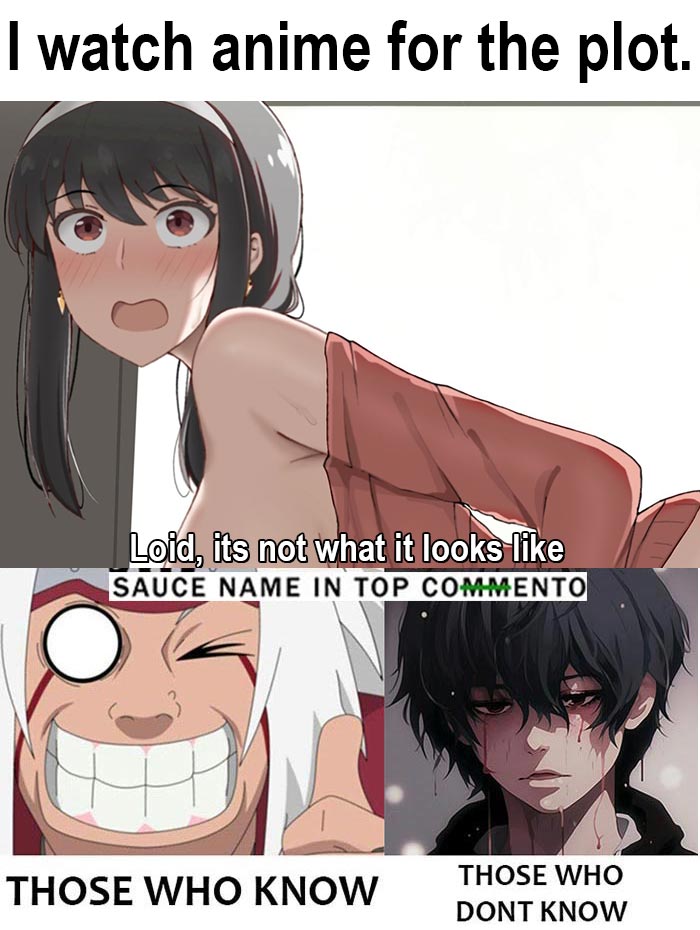
KissxSis

Yankee JK Kuzuhana-chan
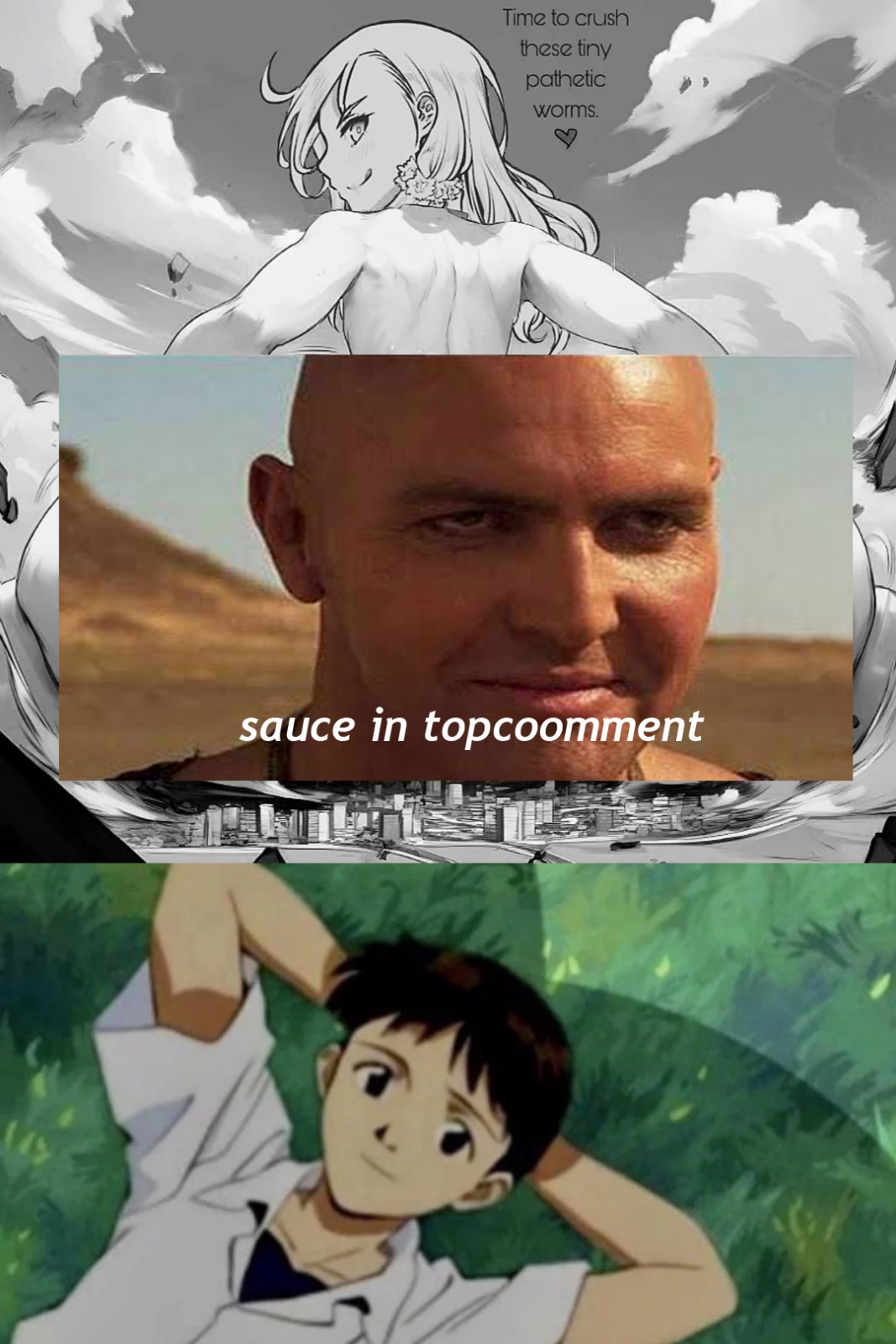
Sauce – Full Image
